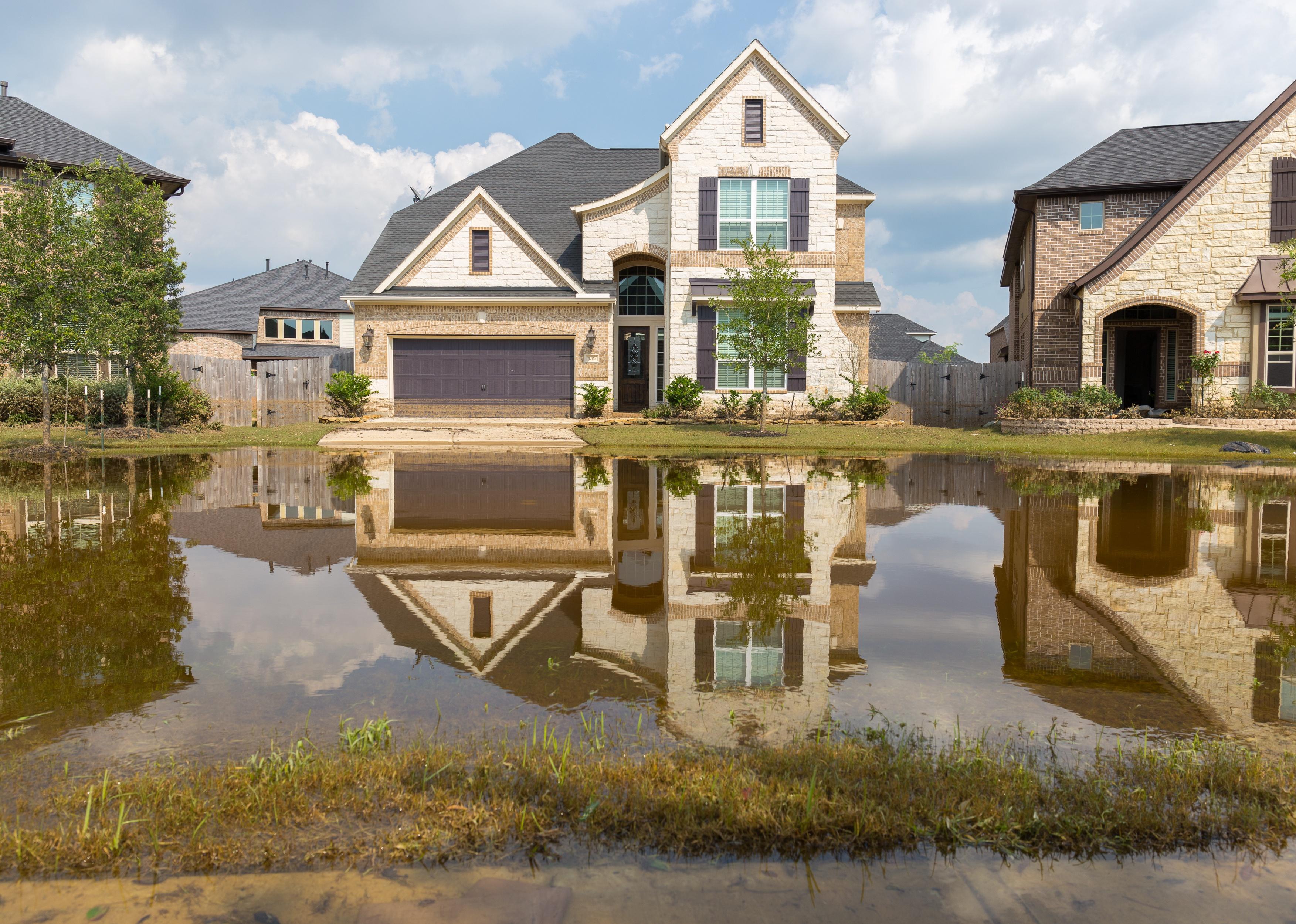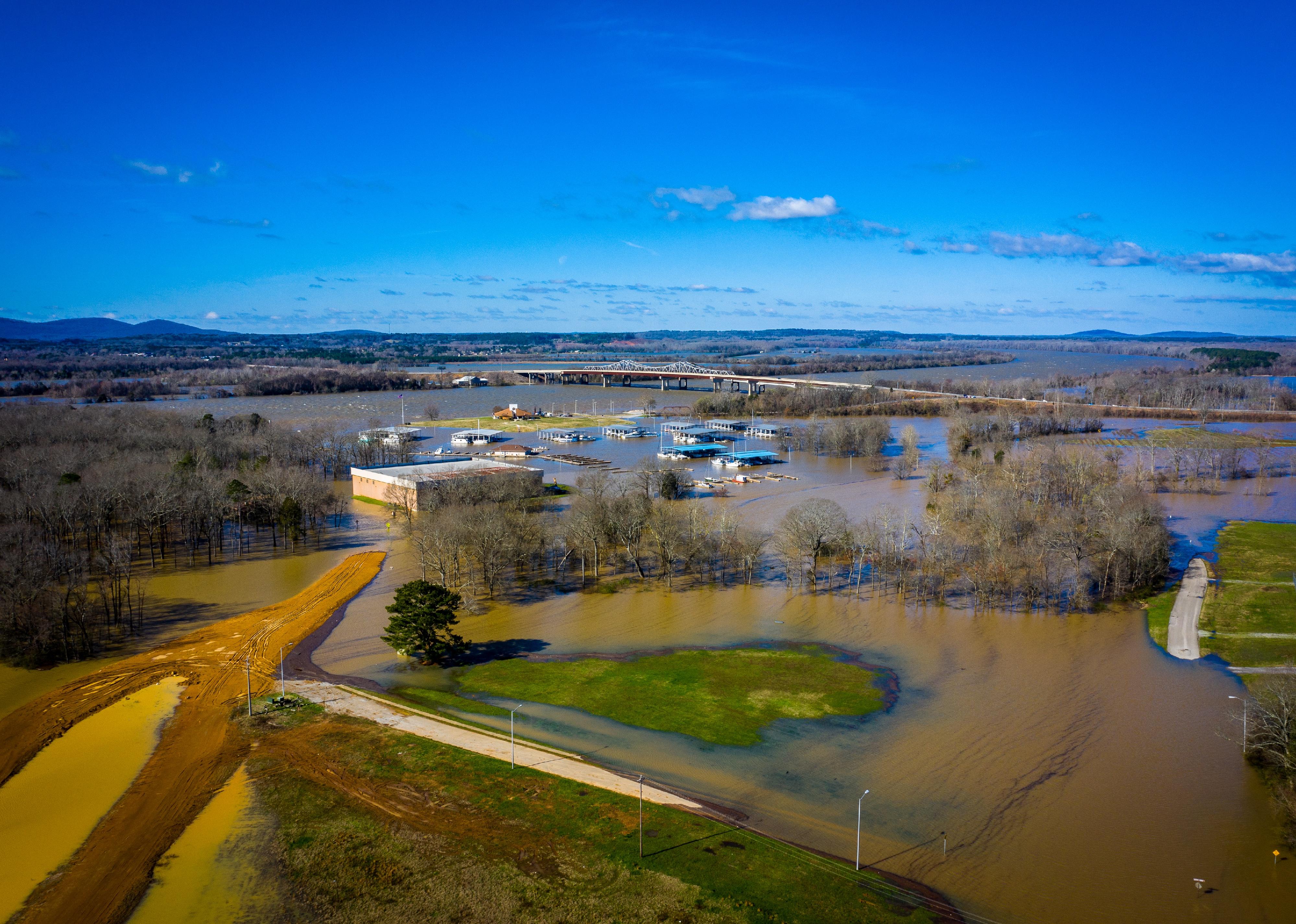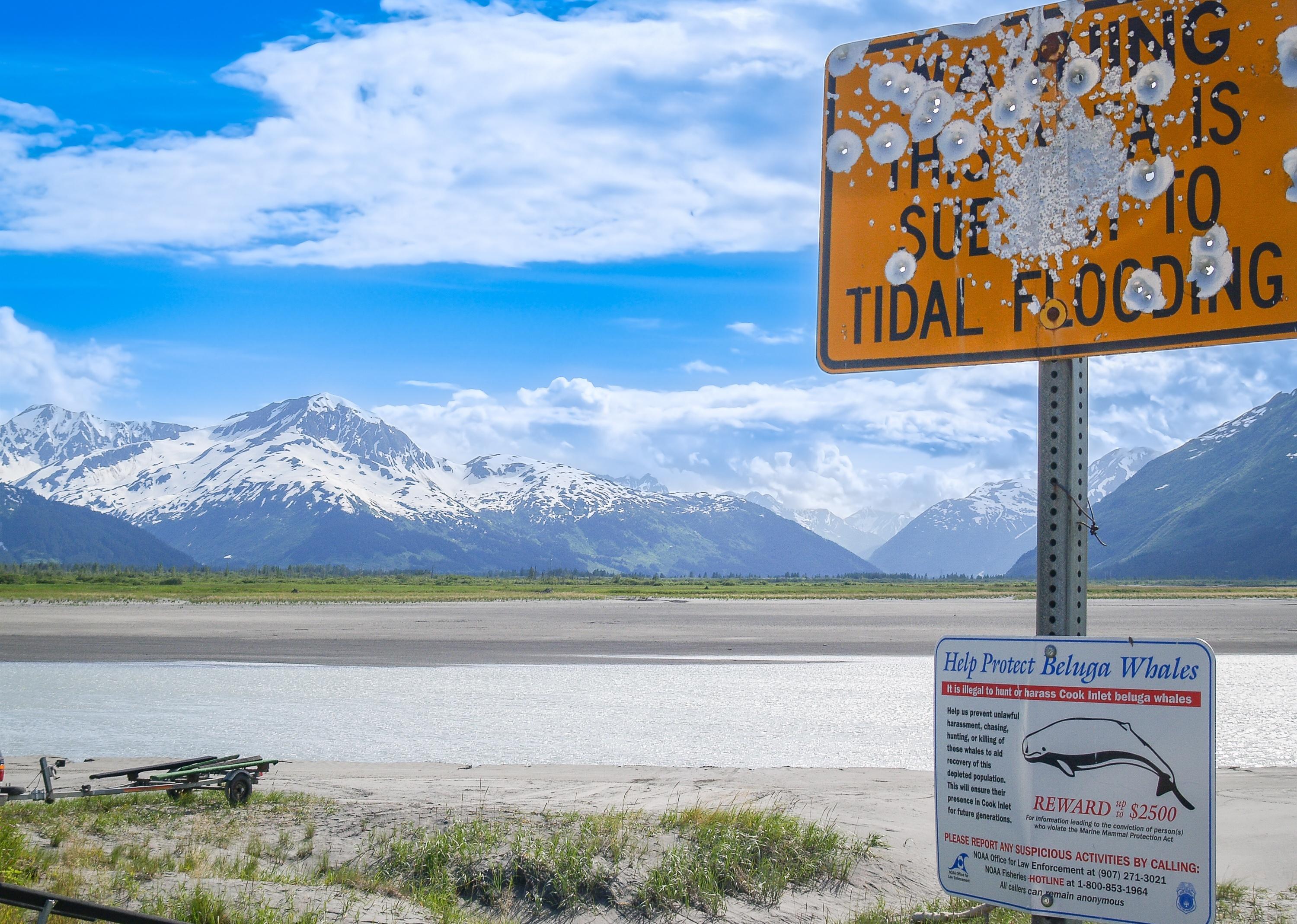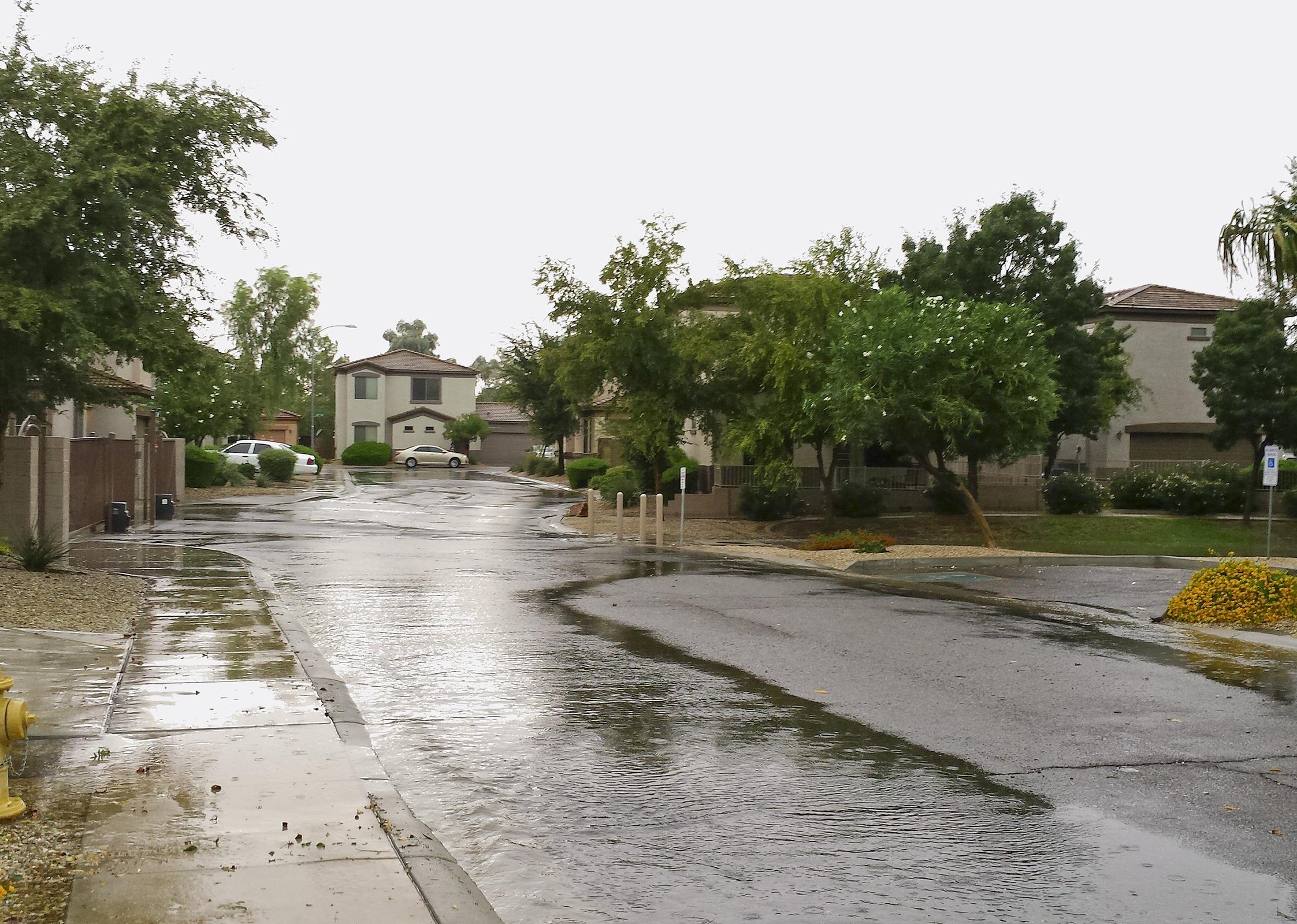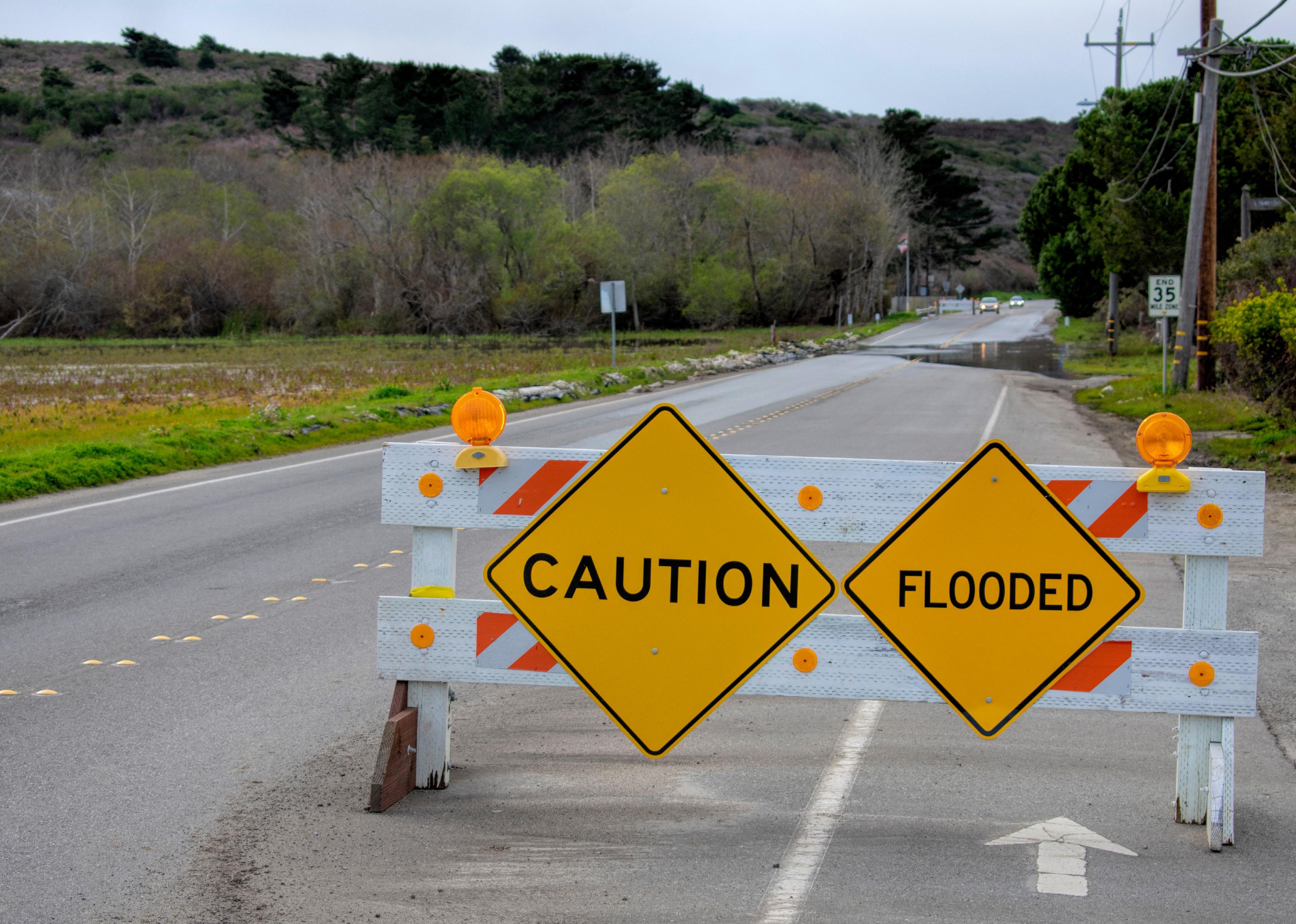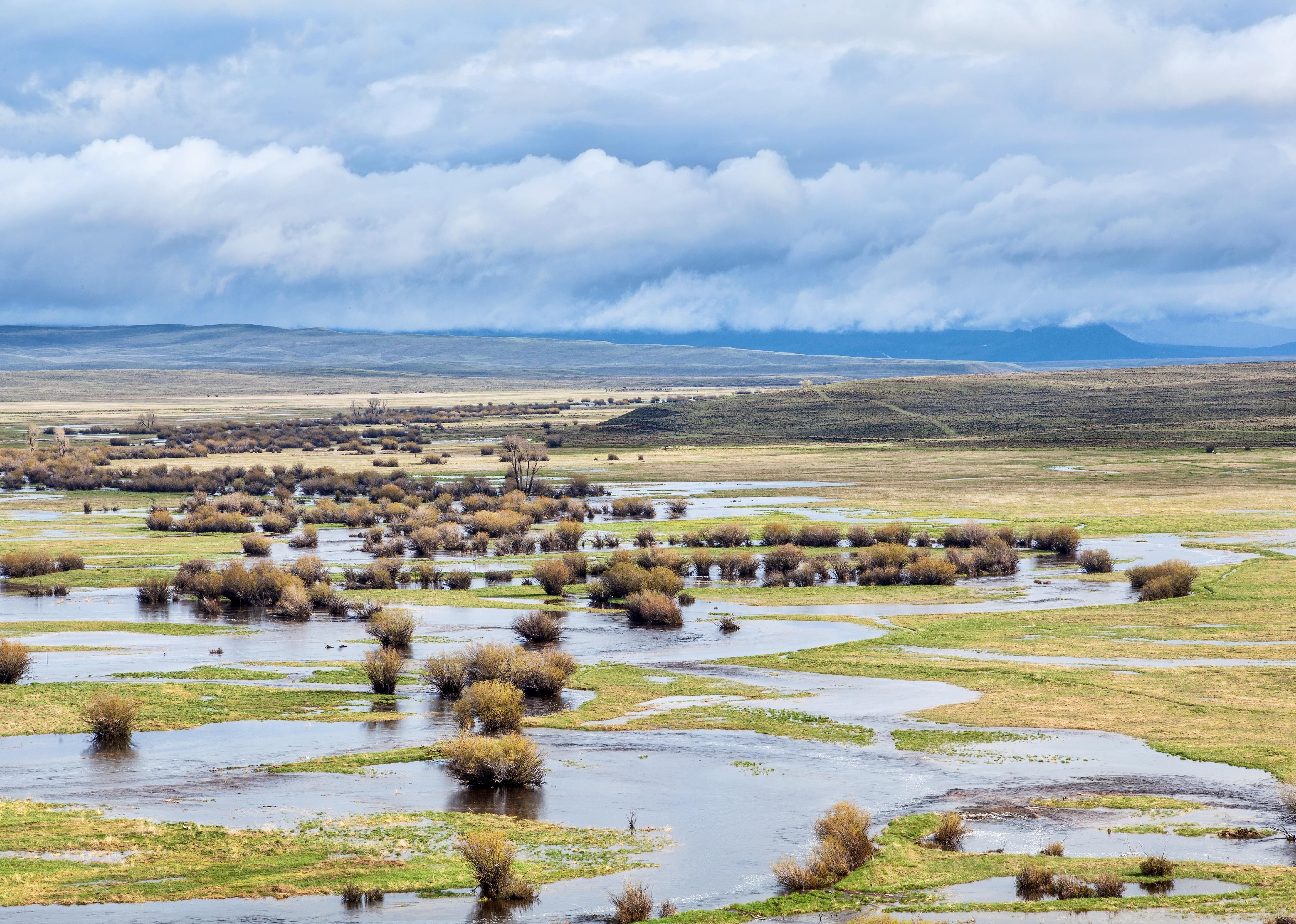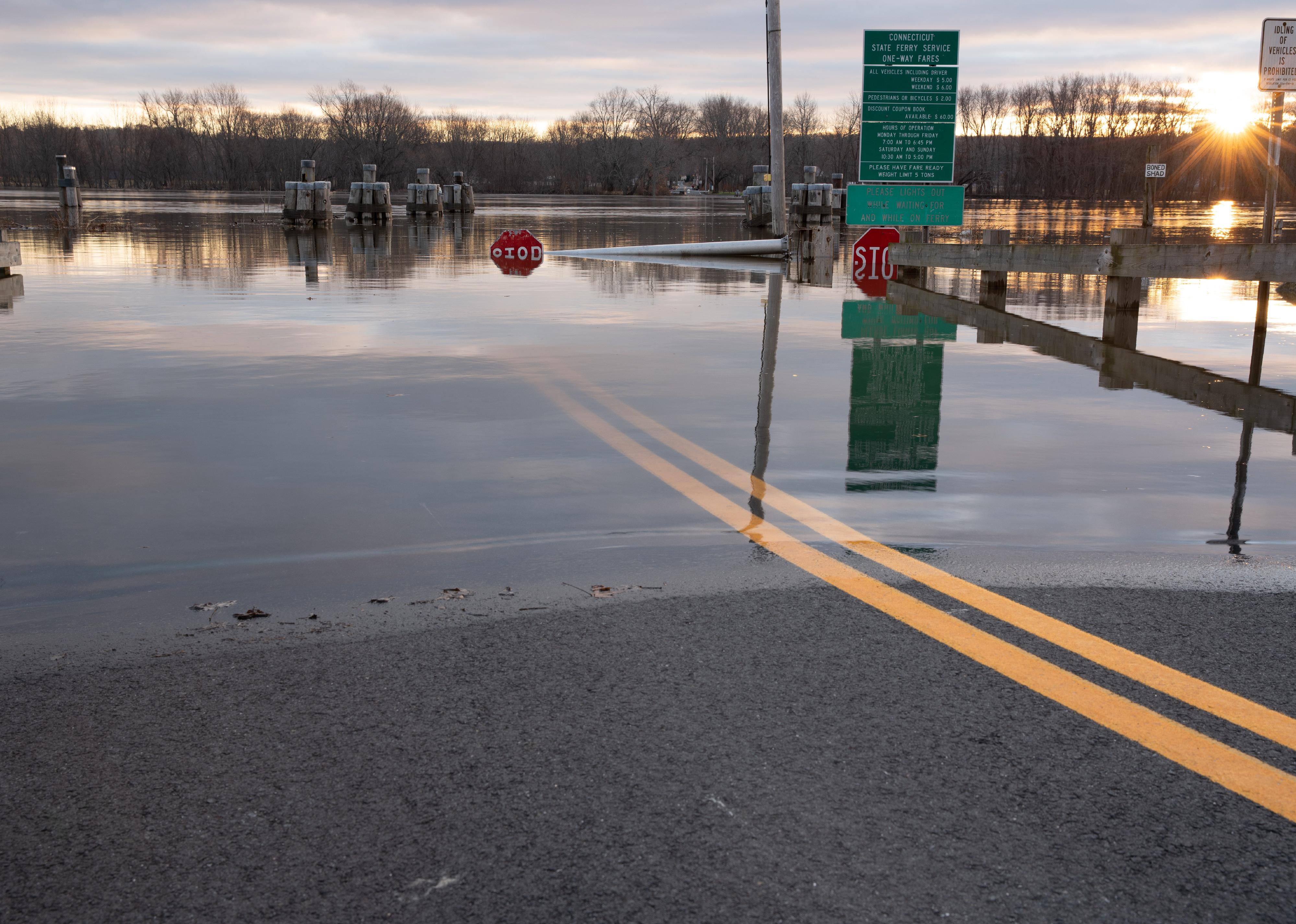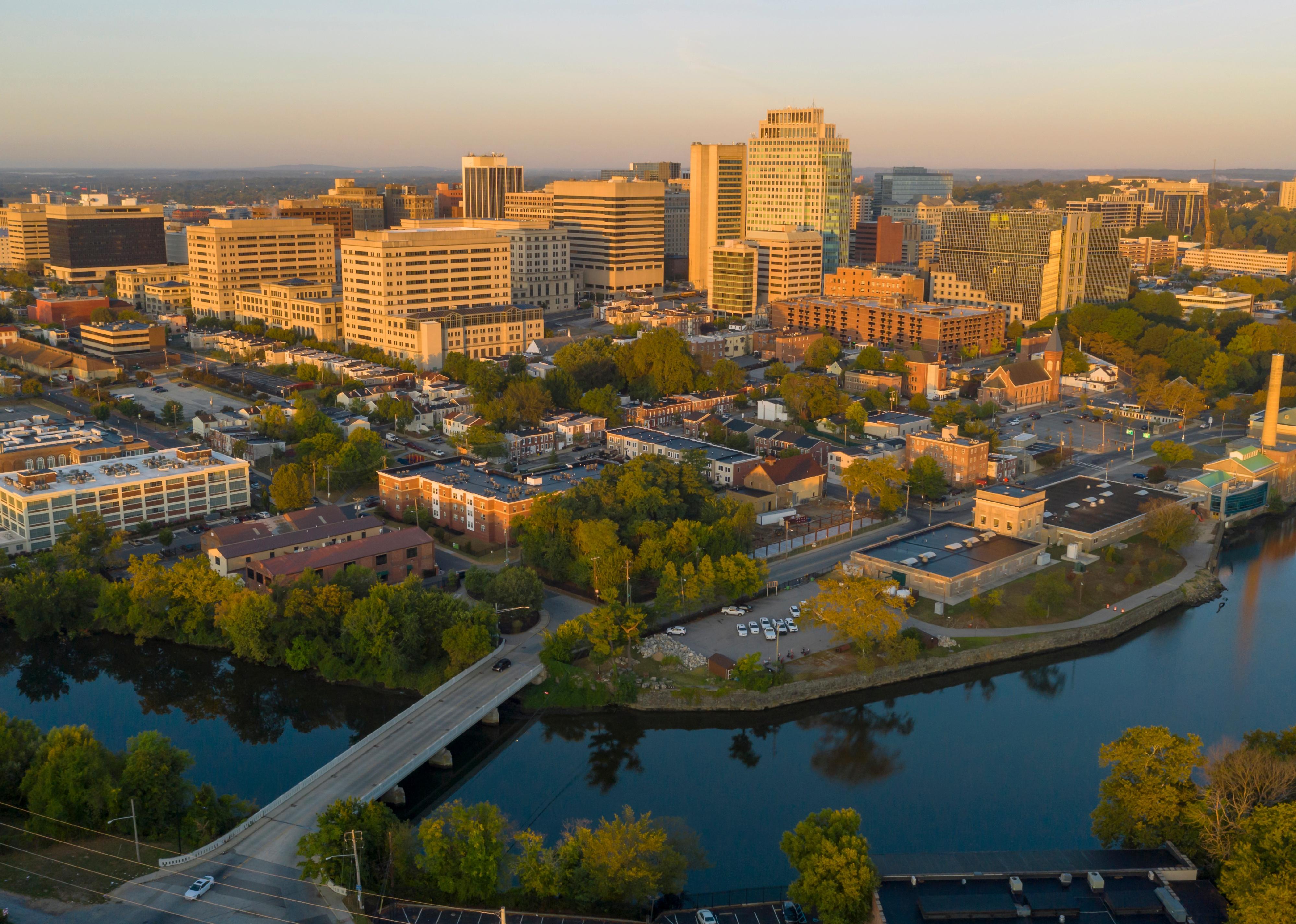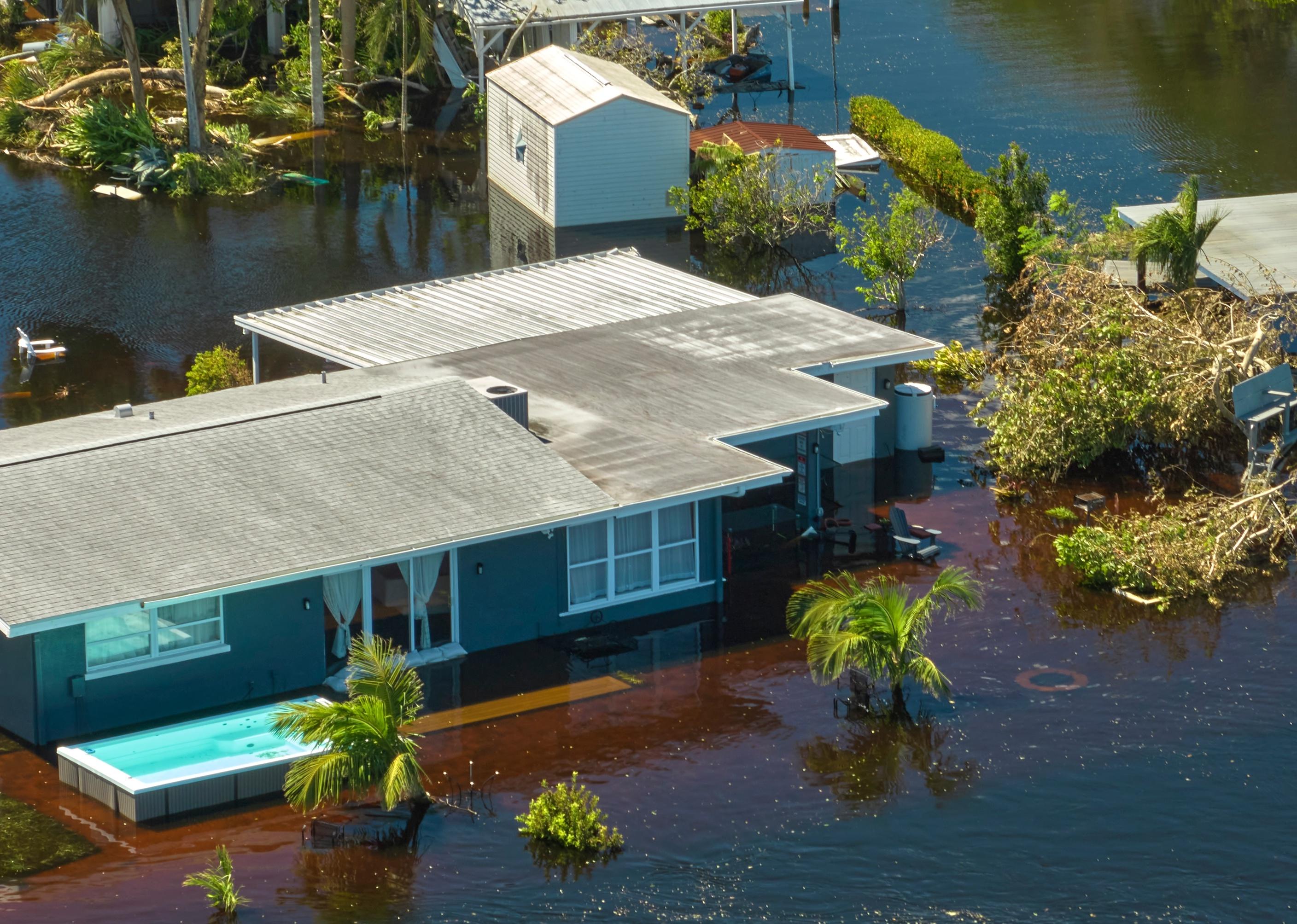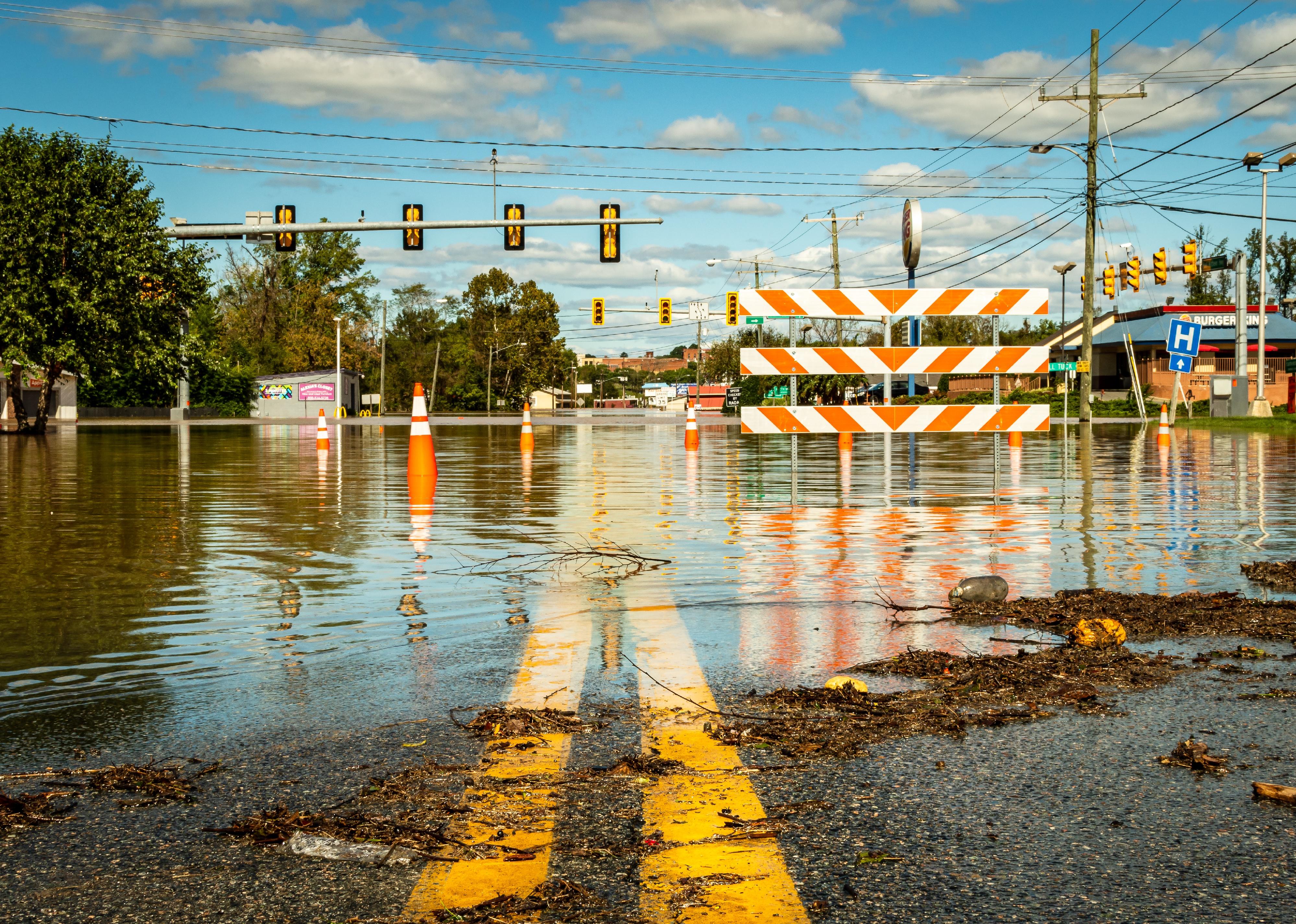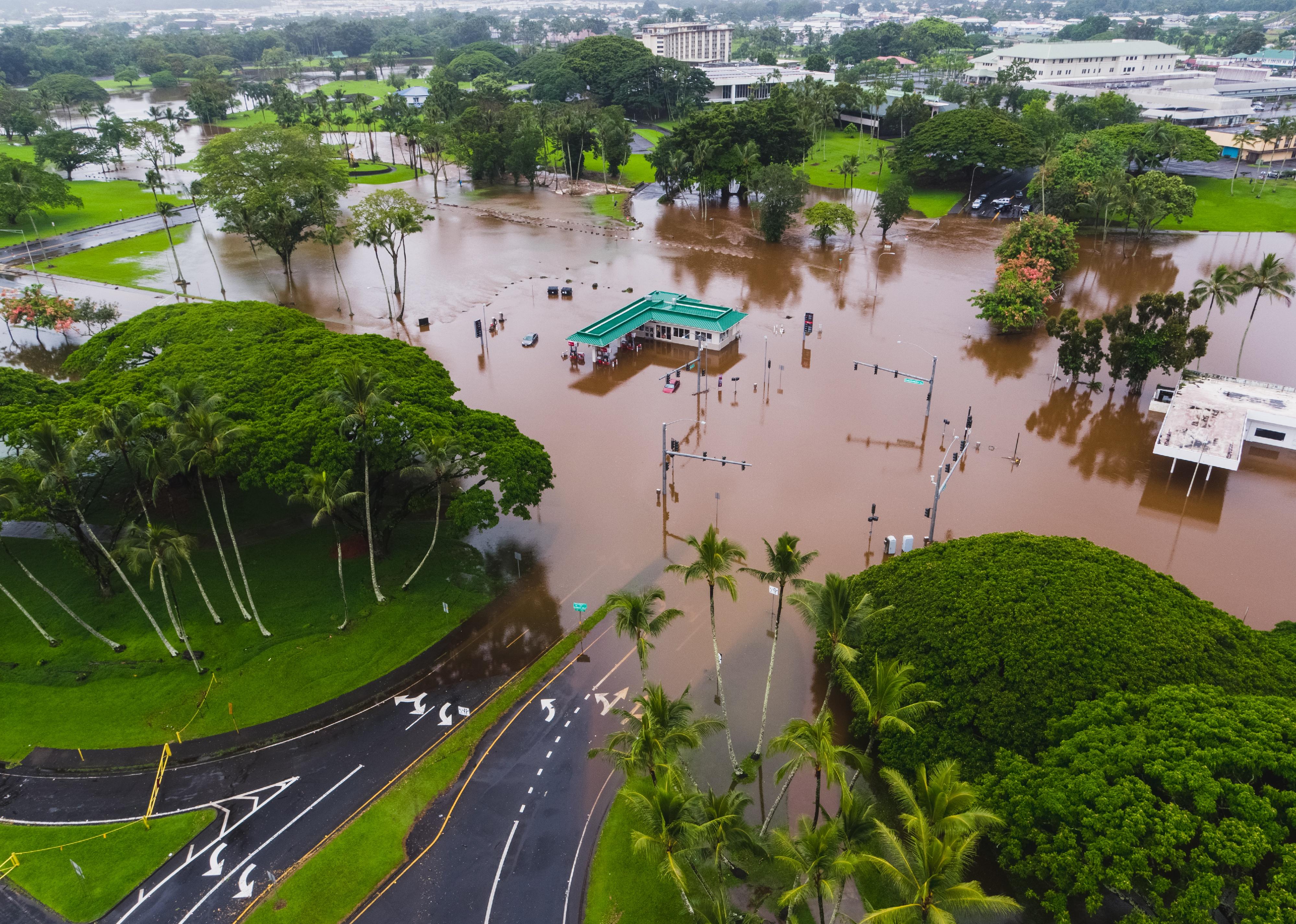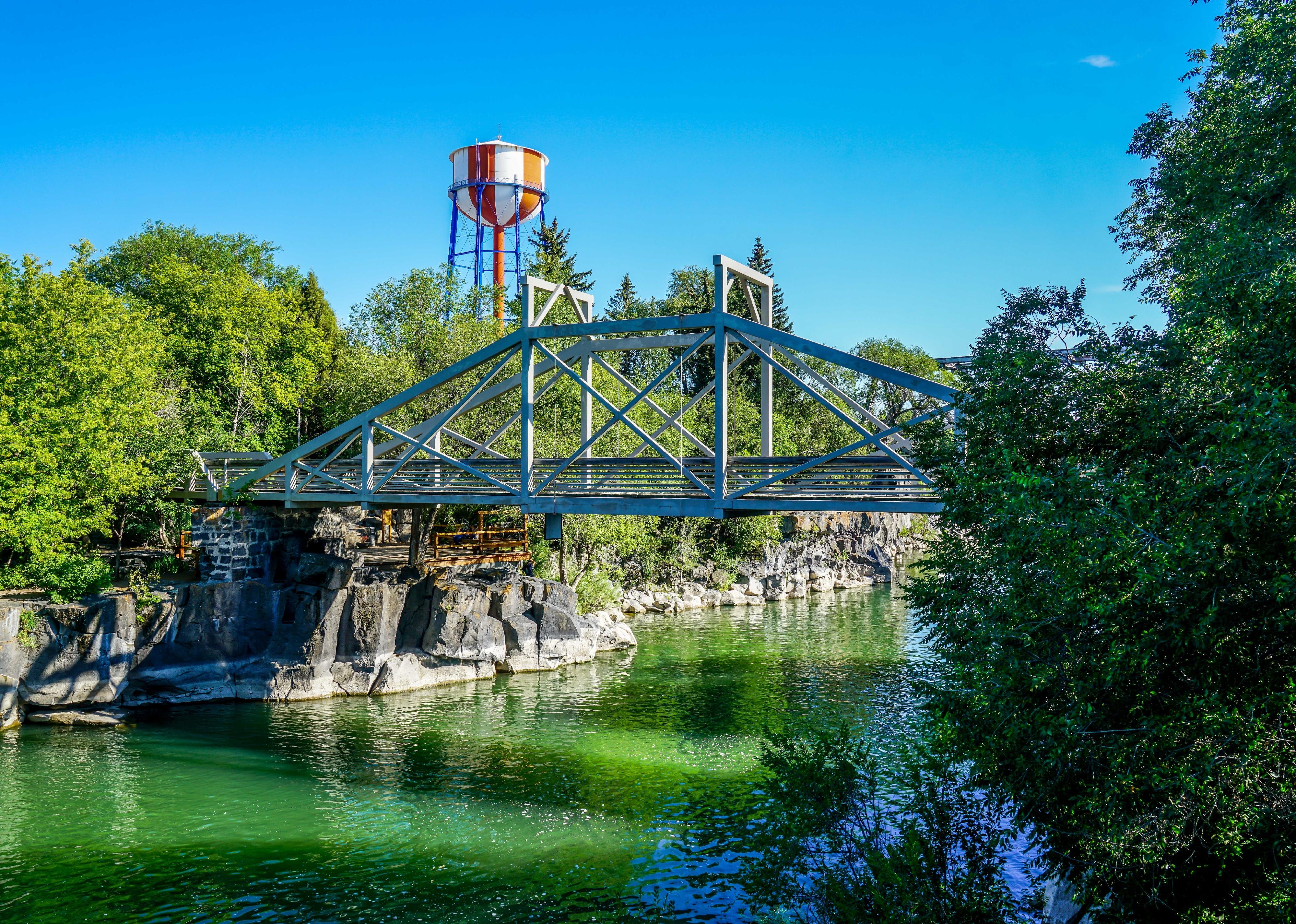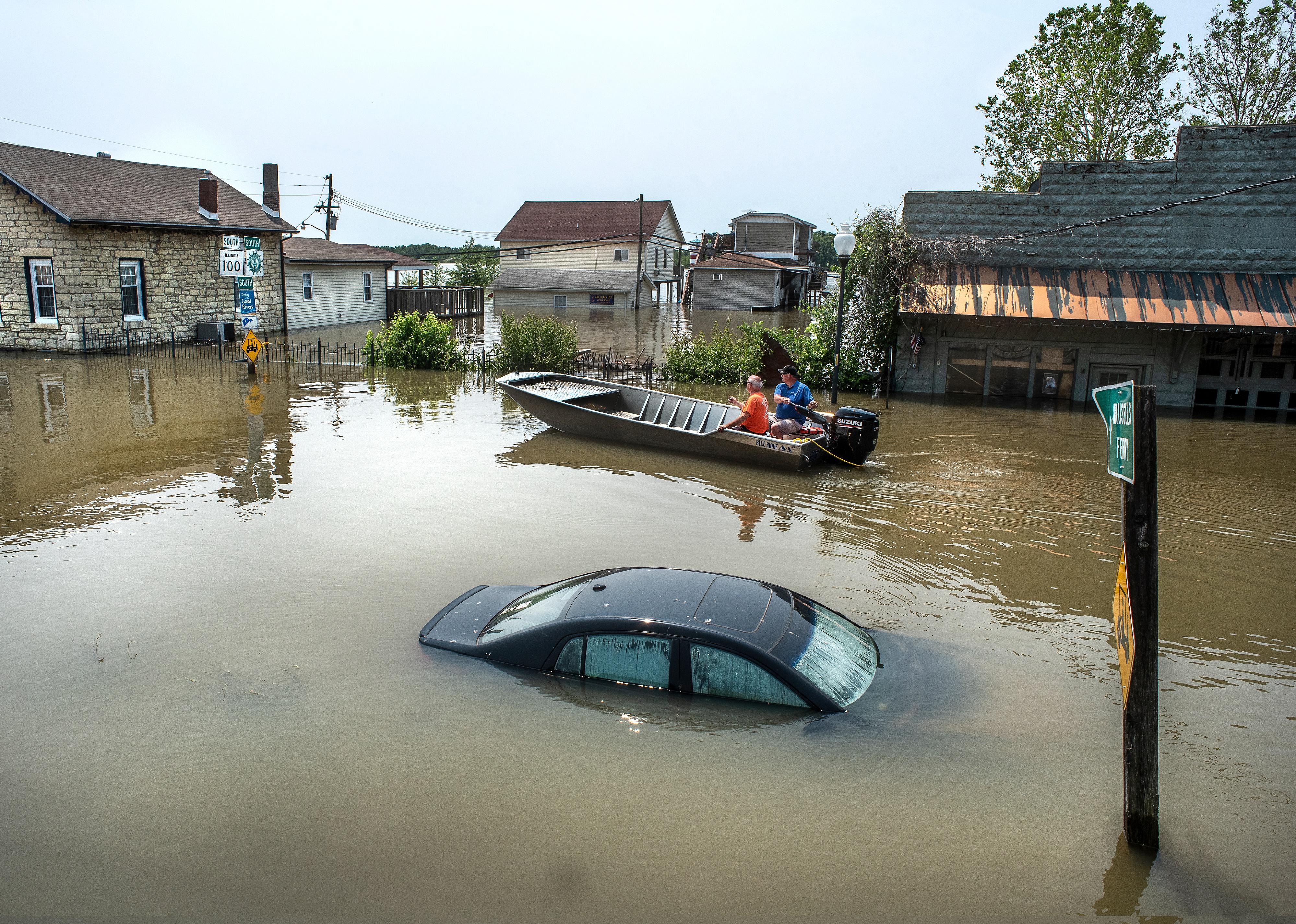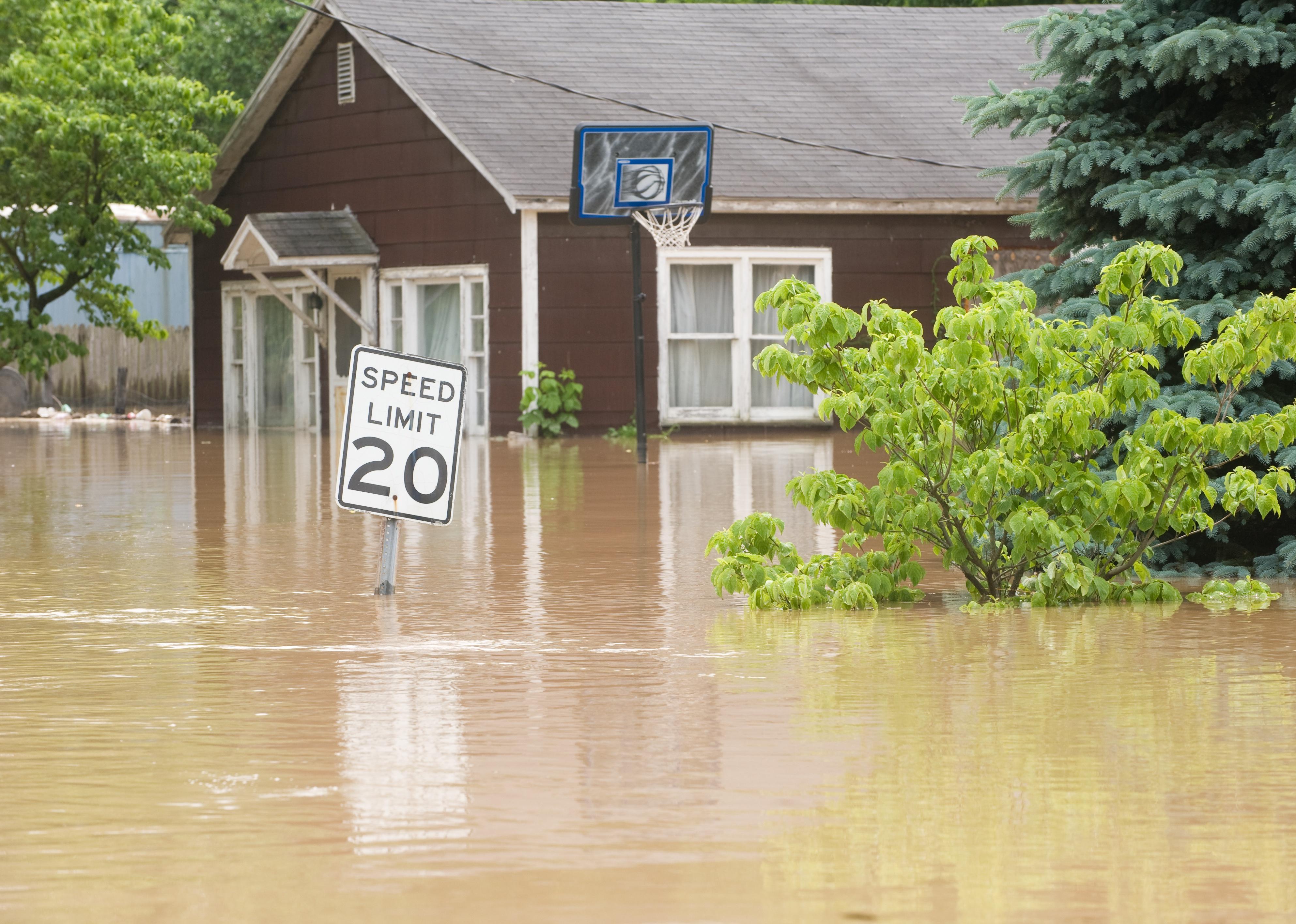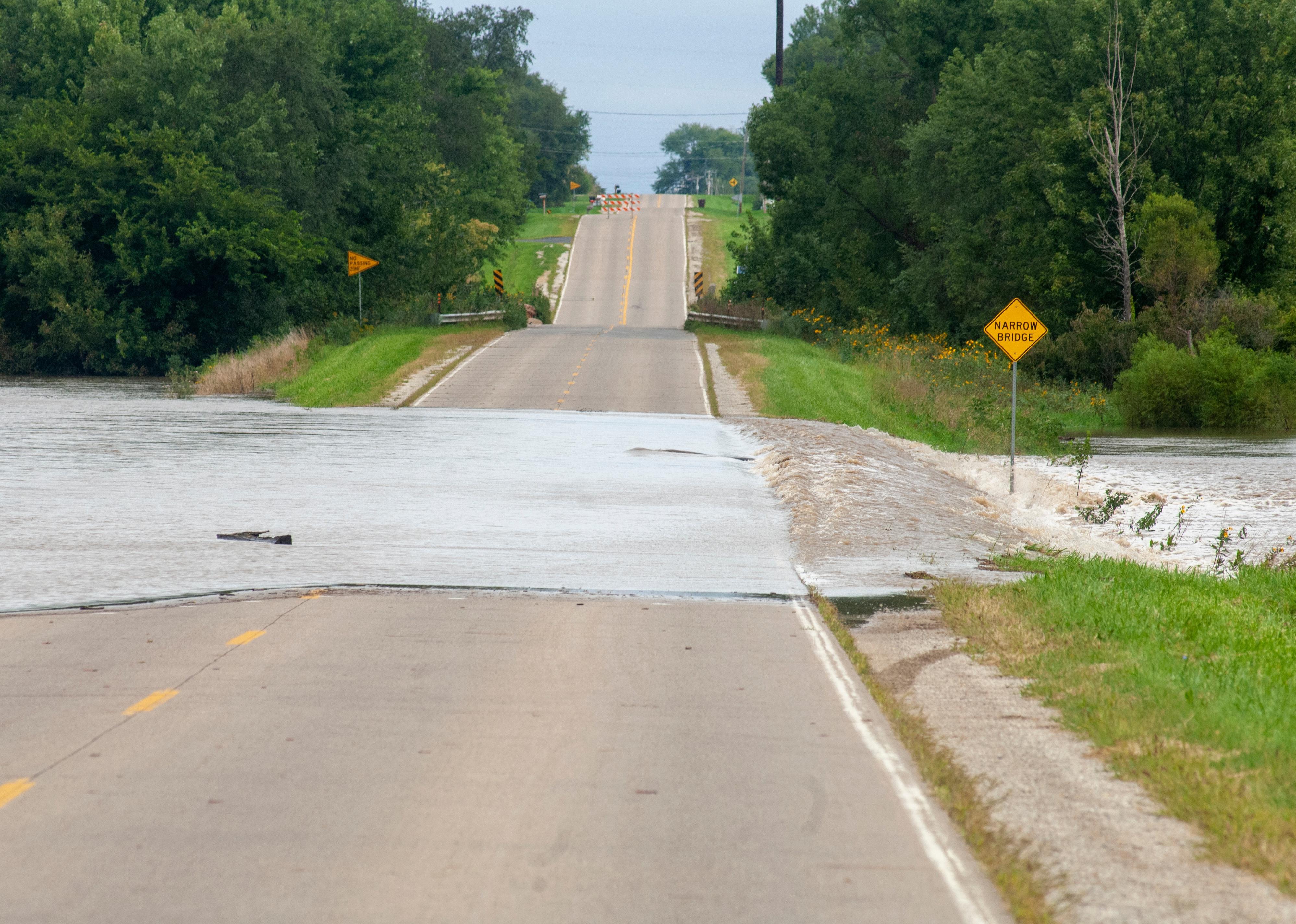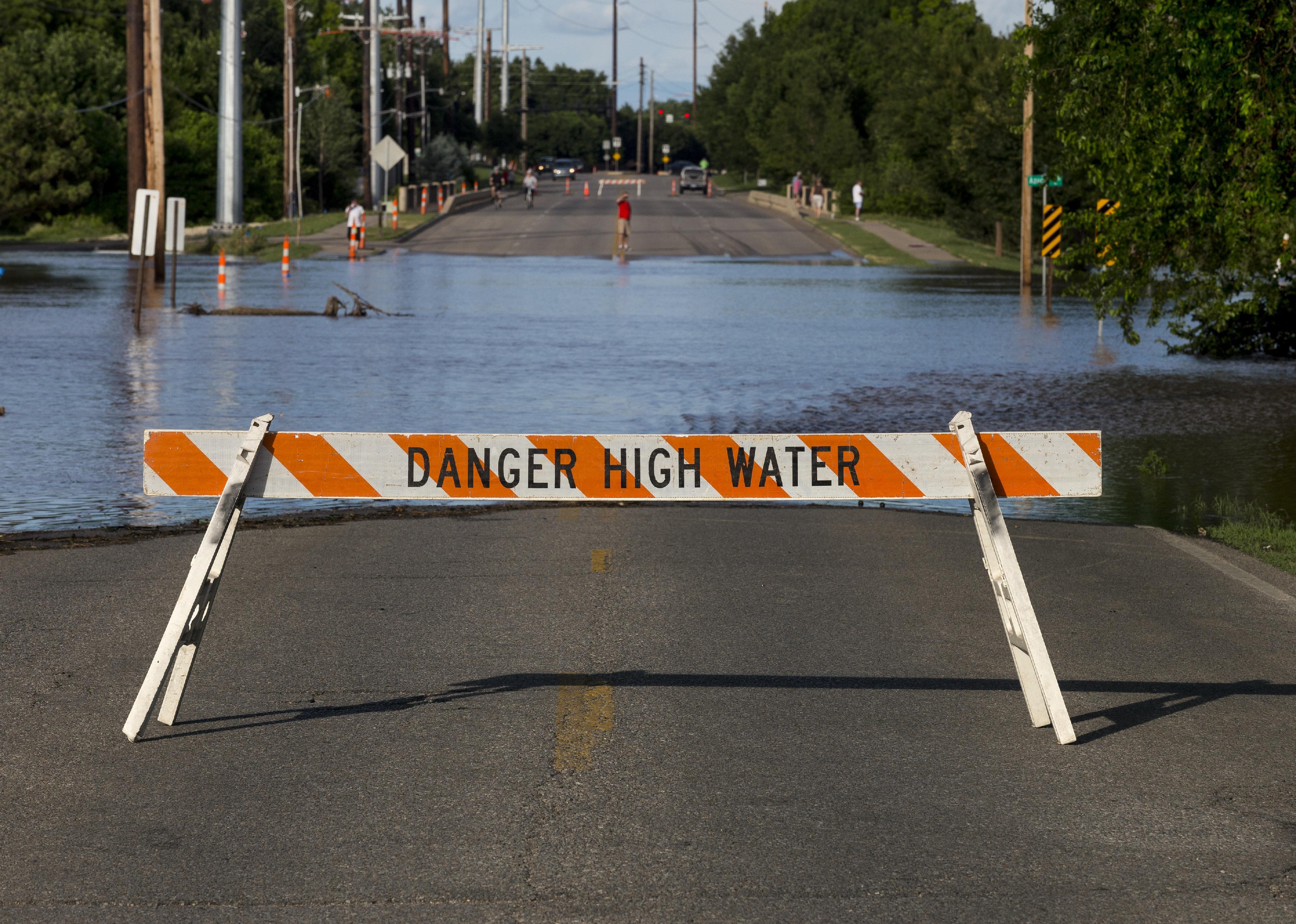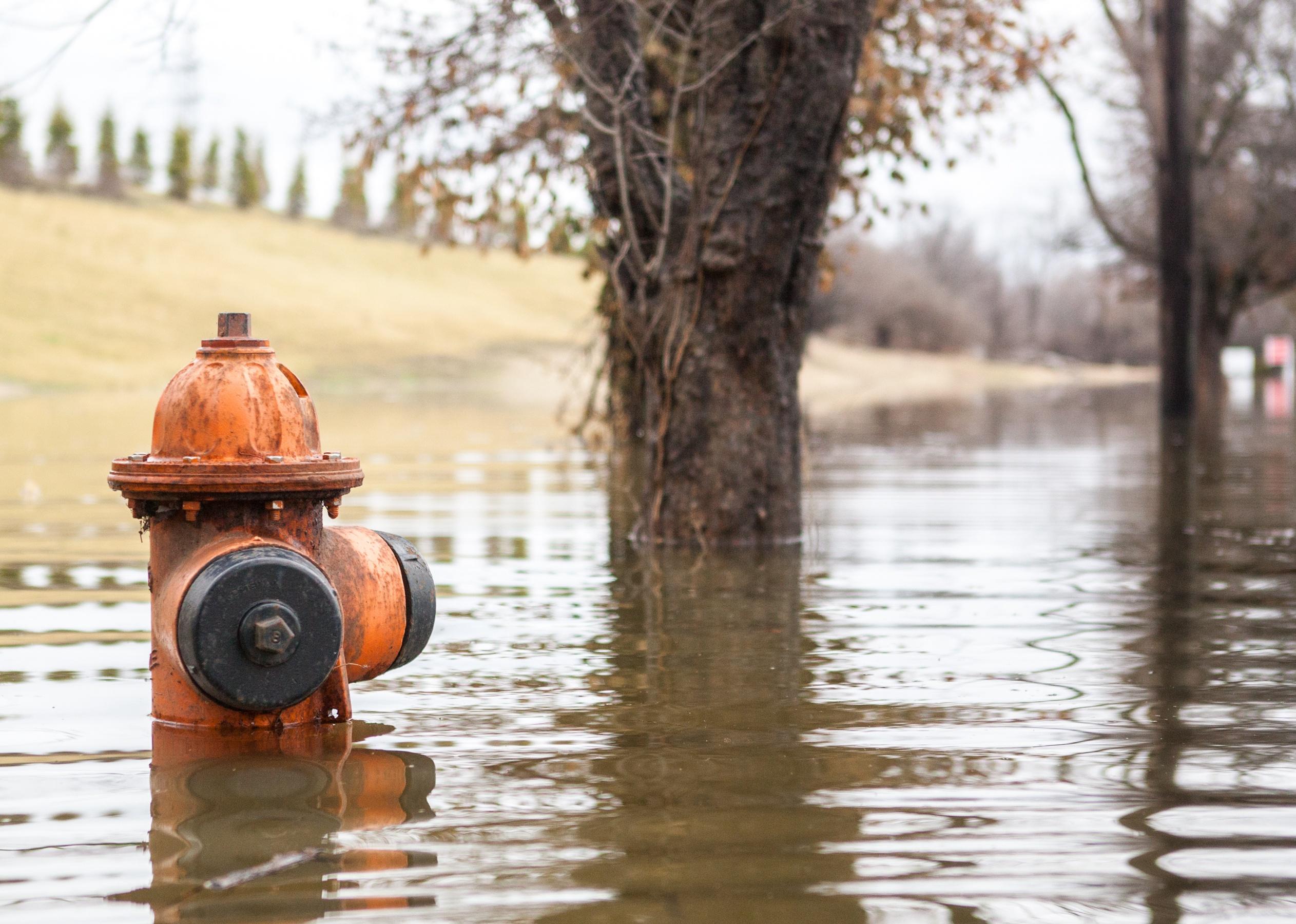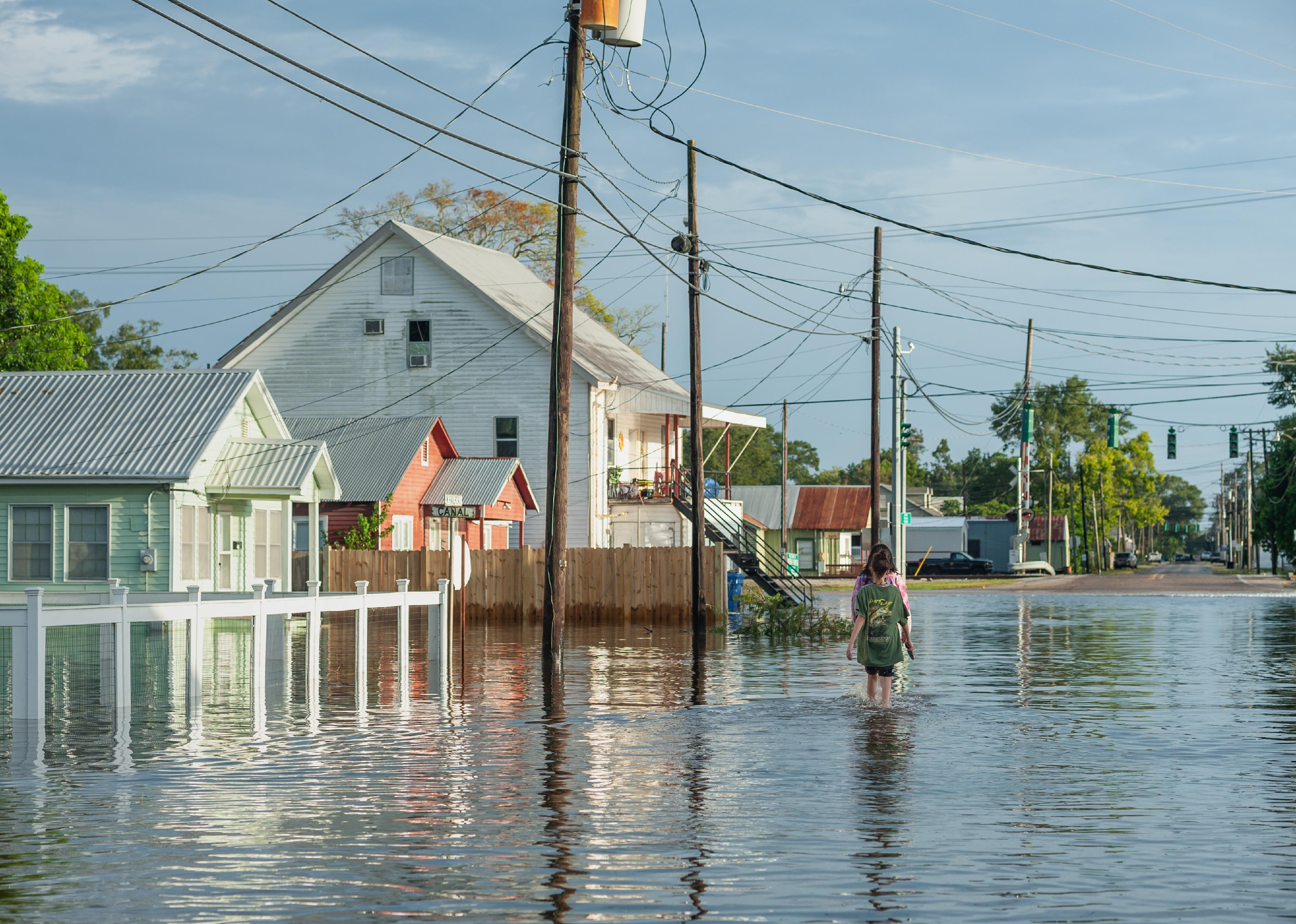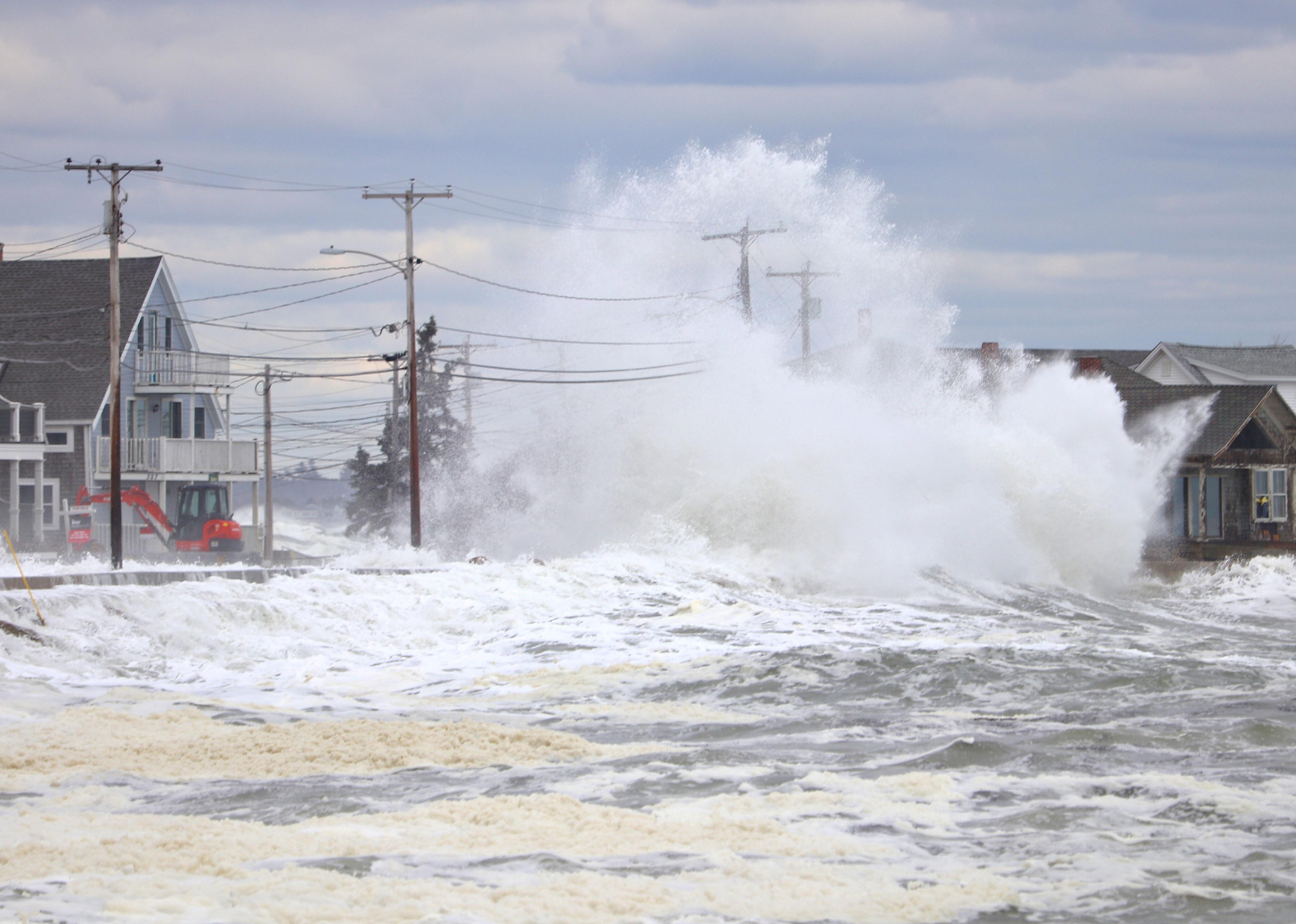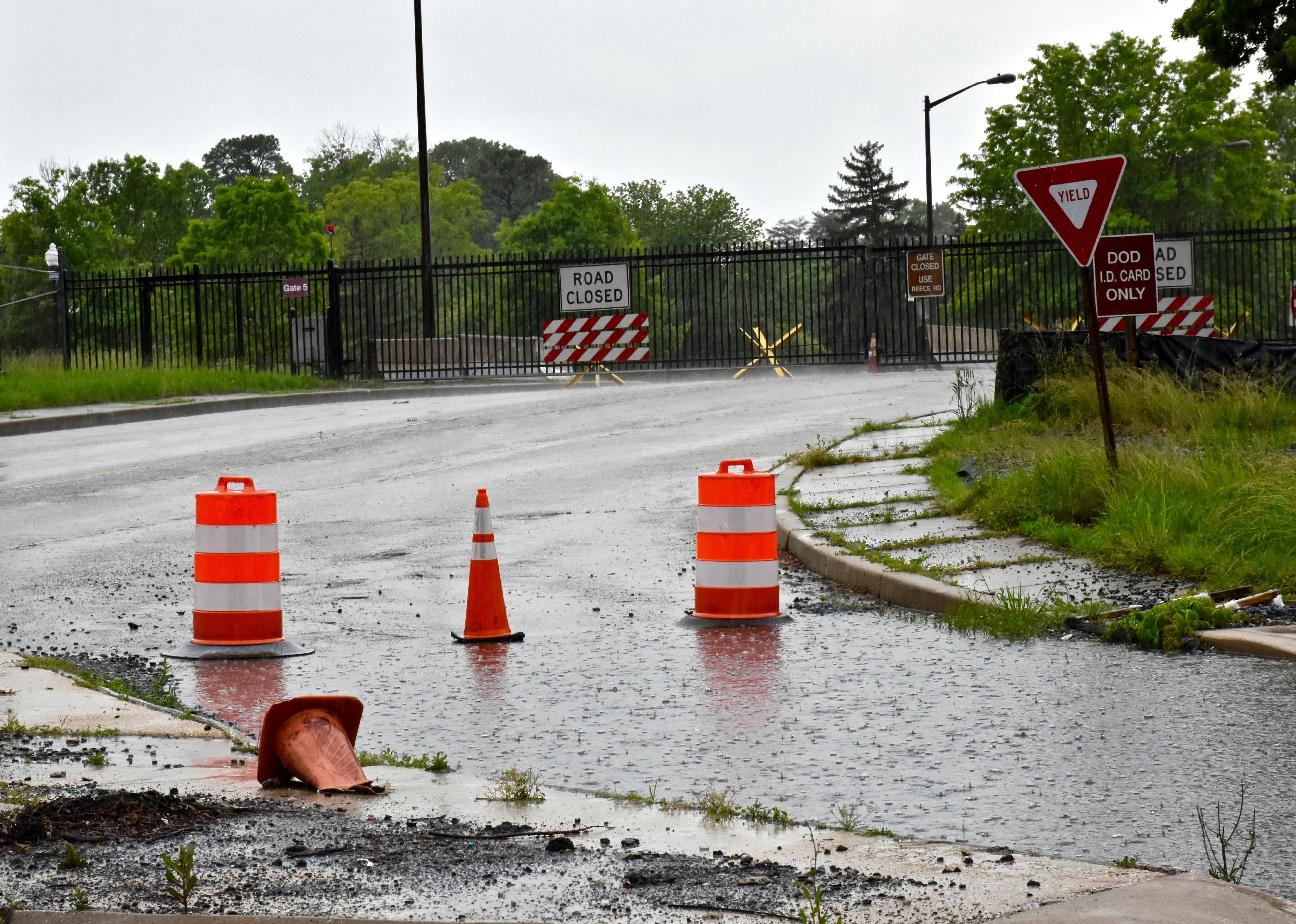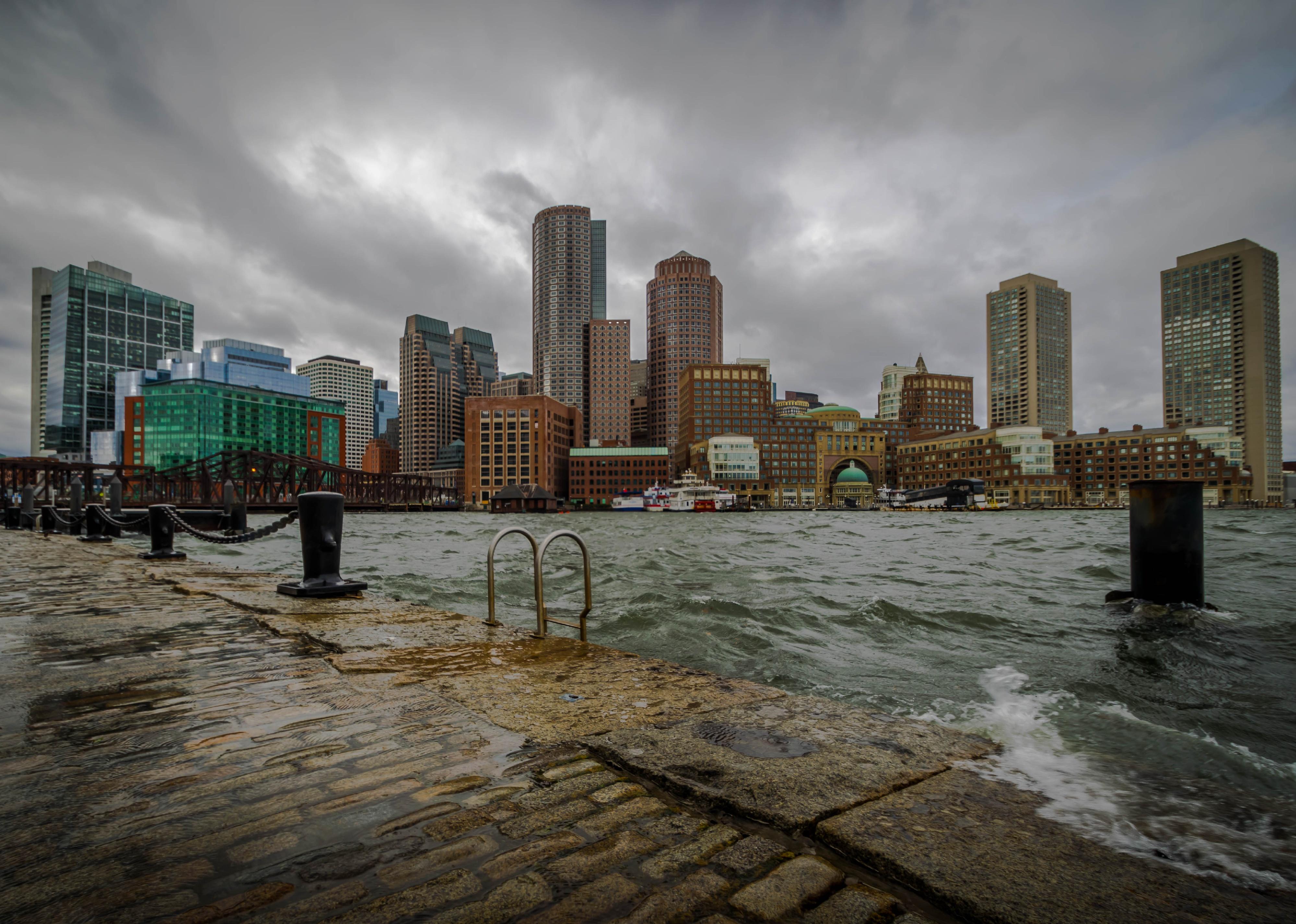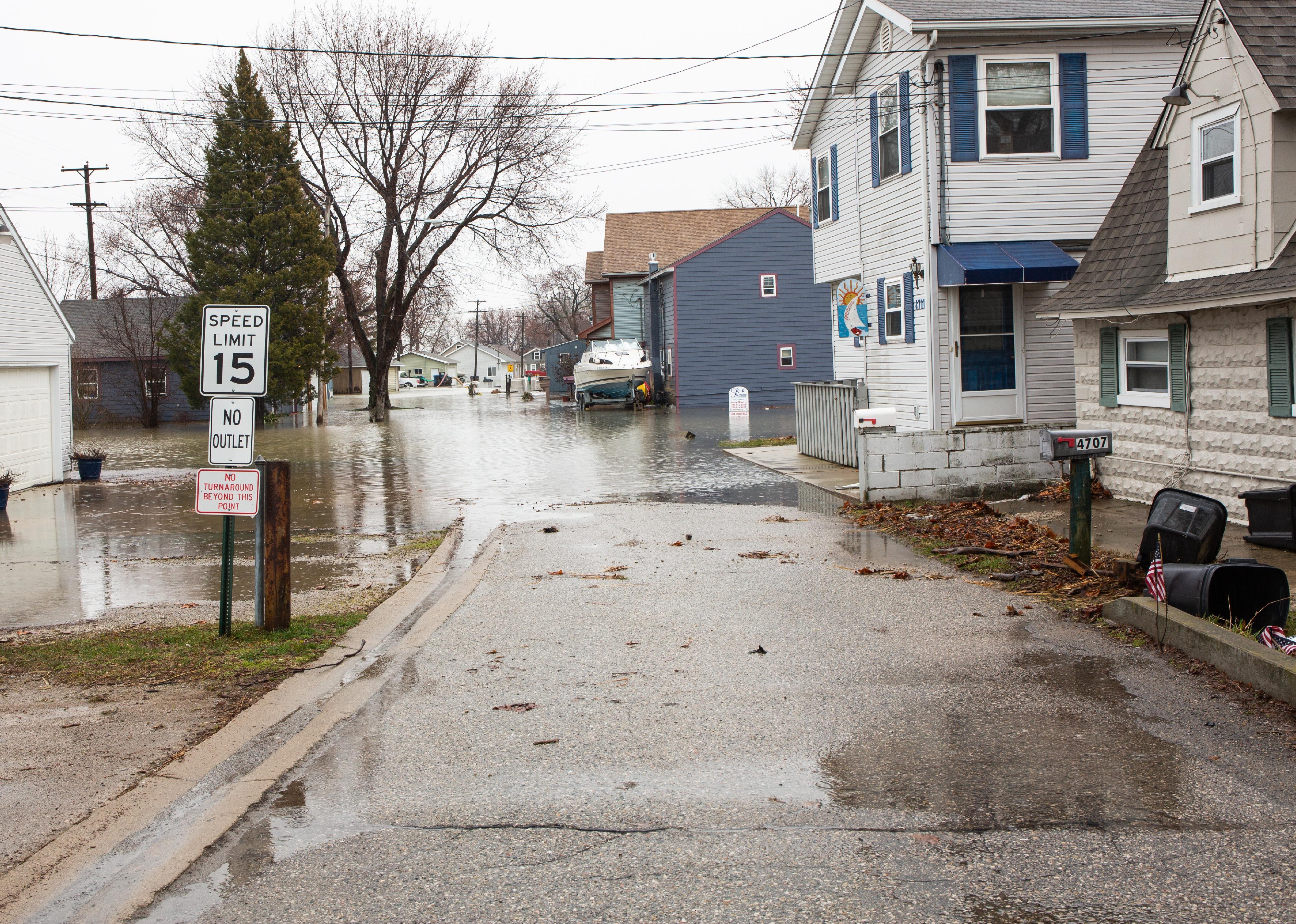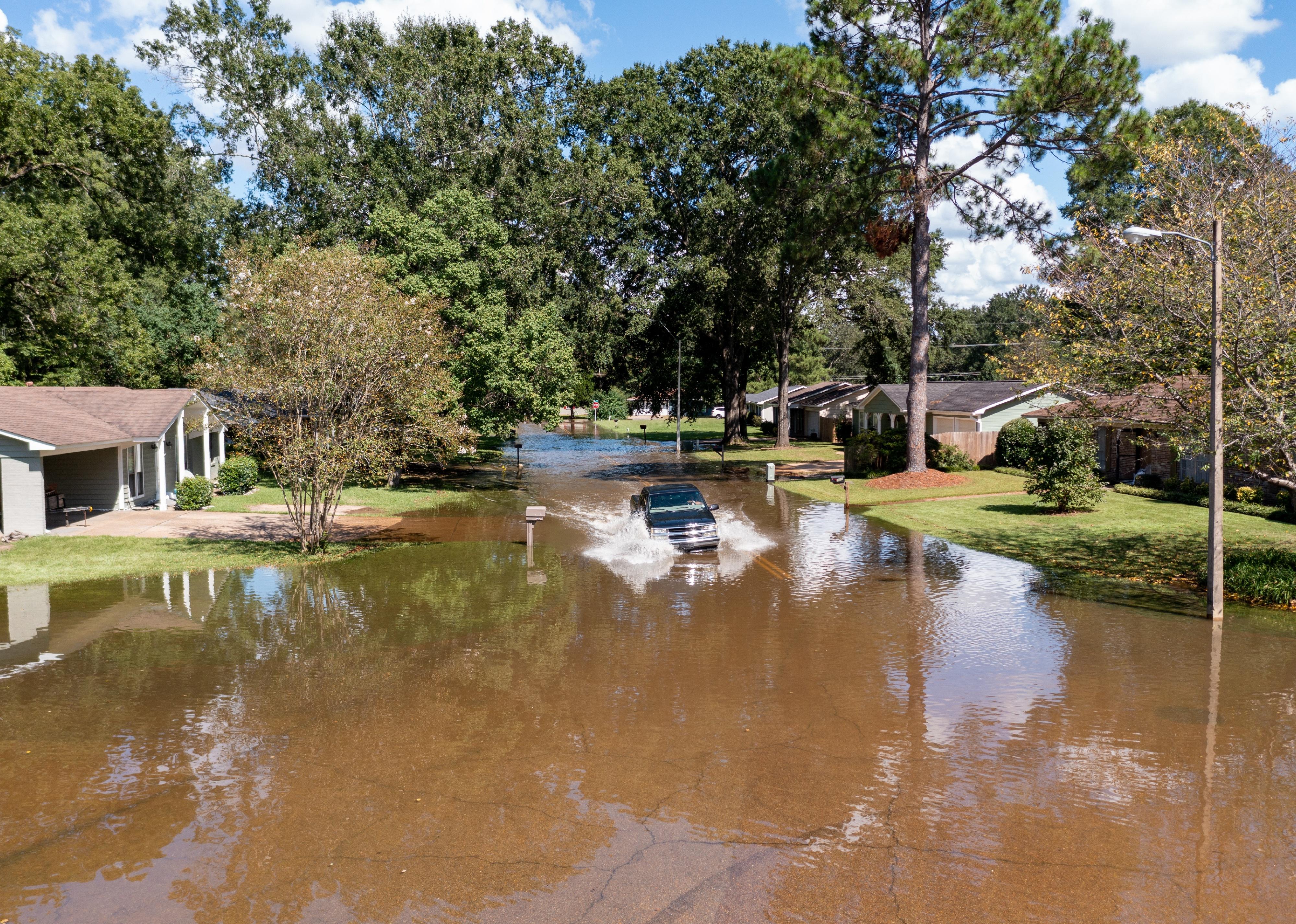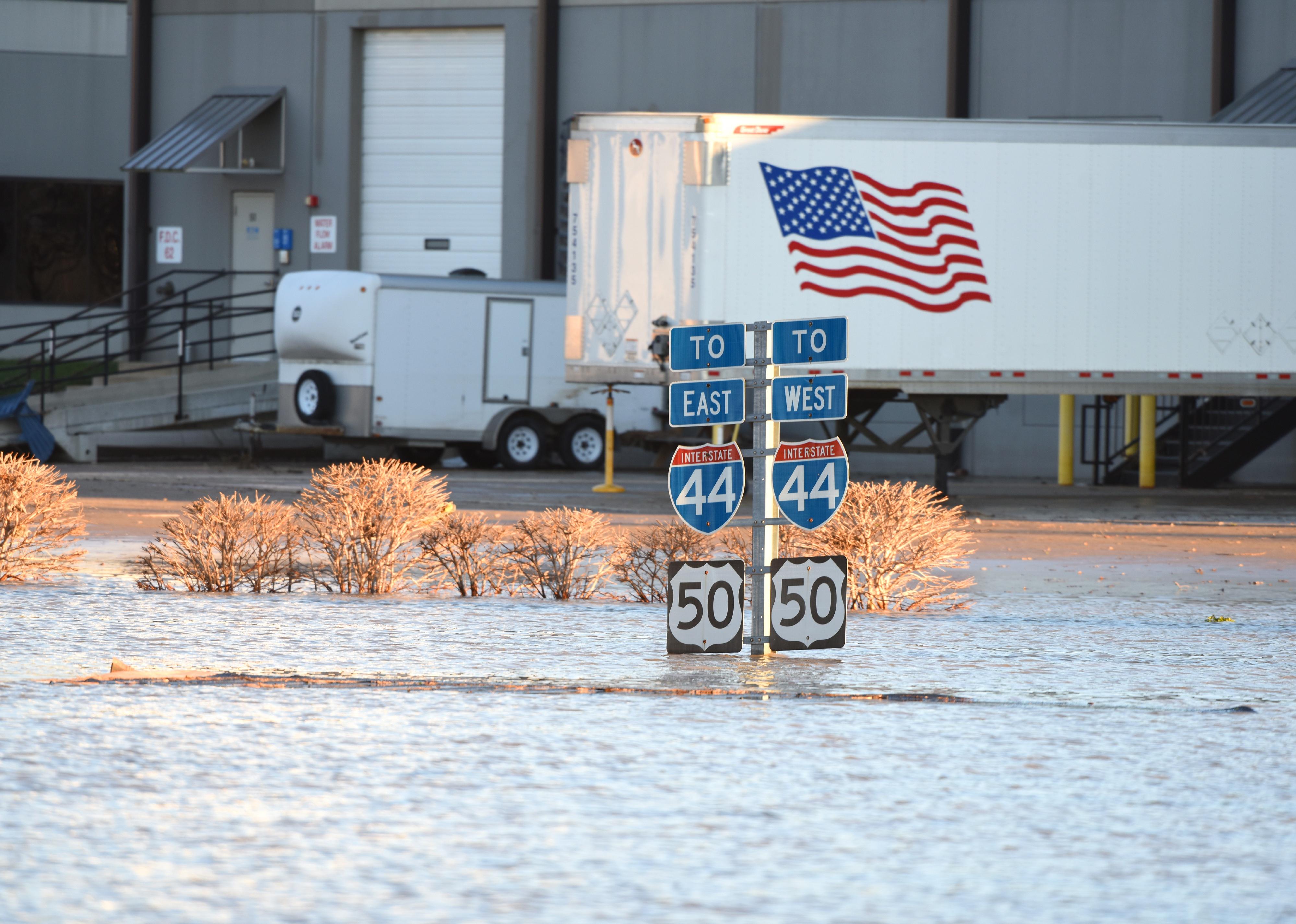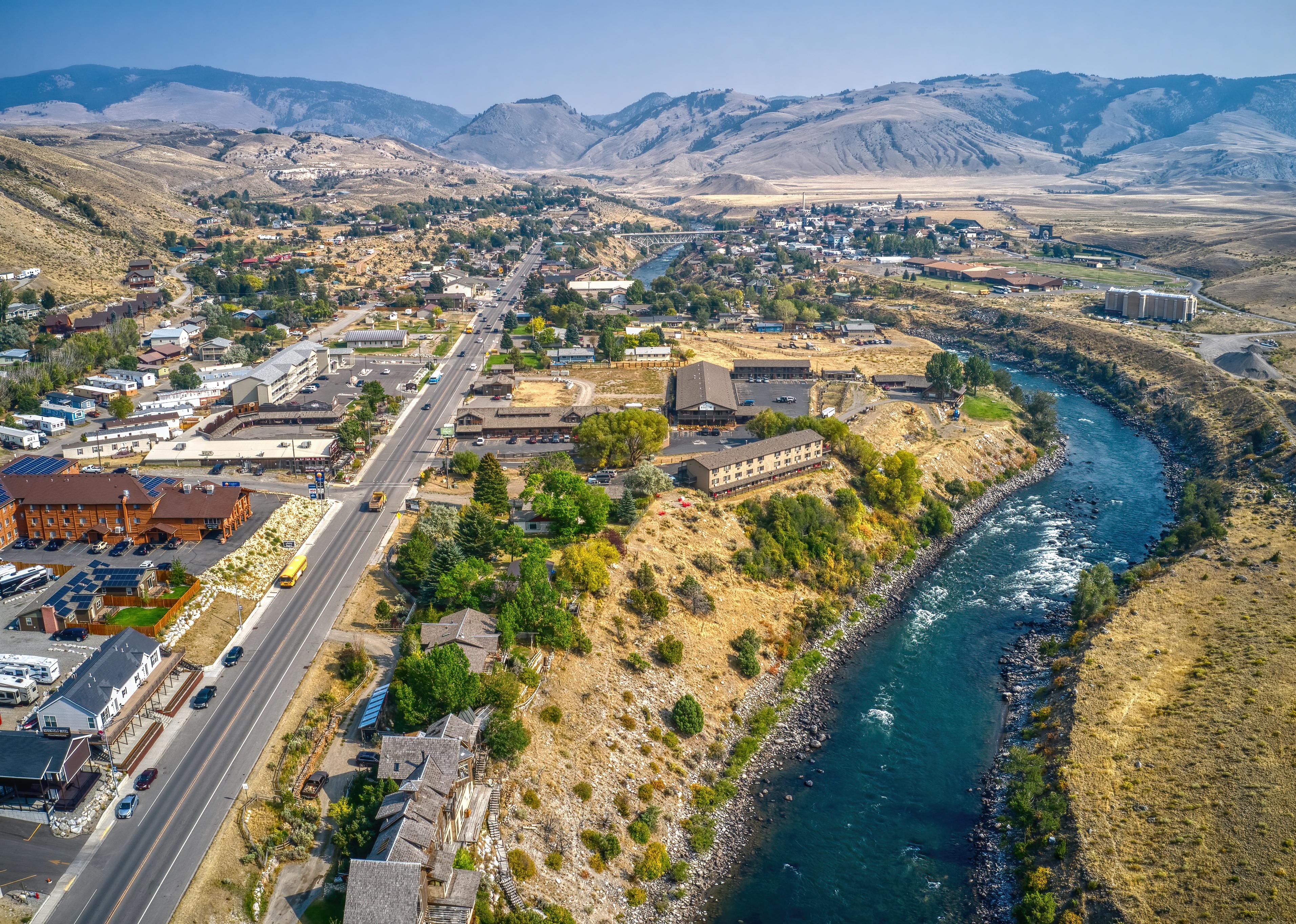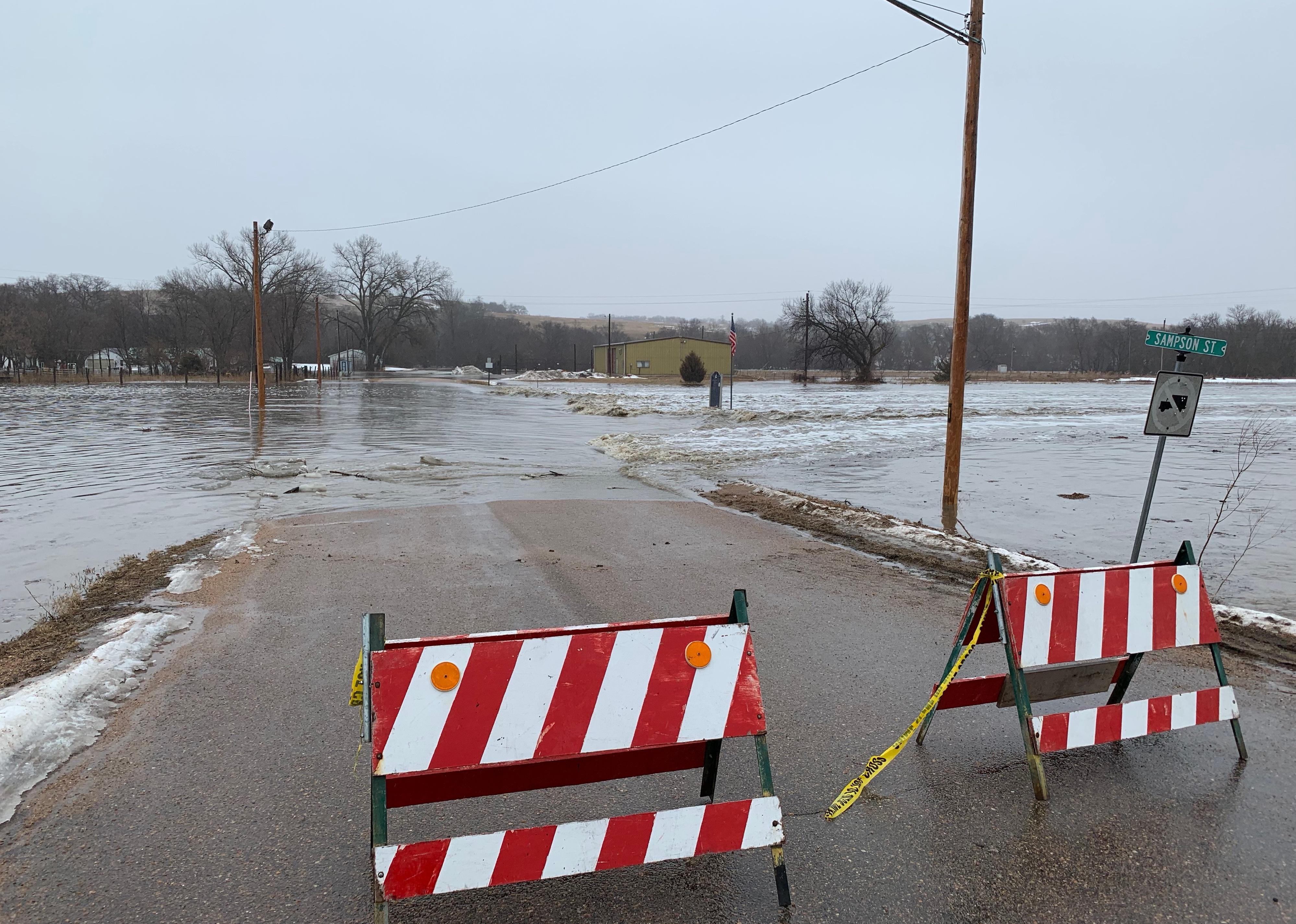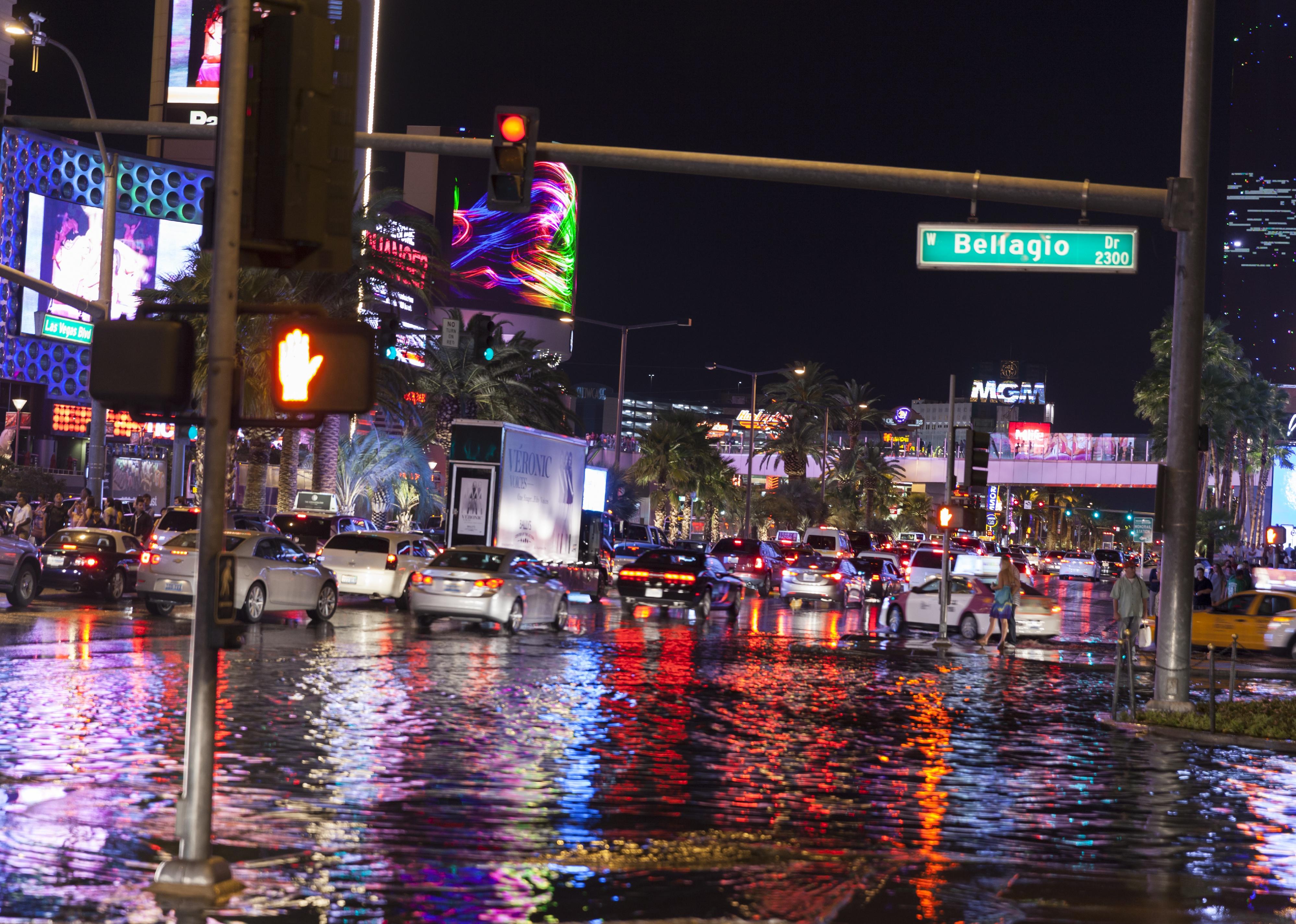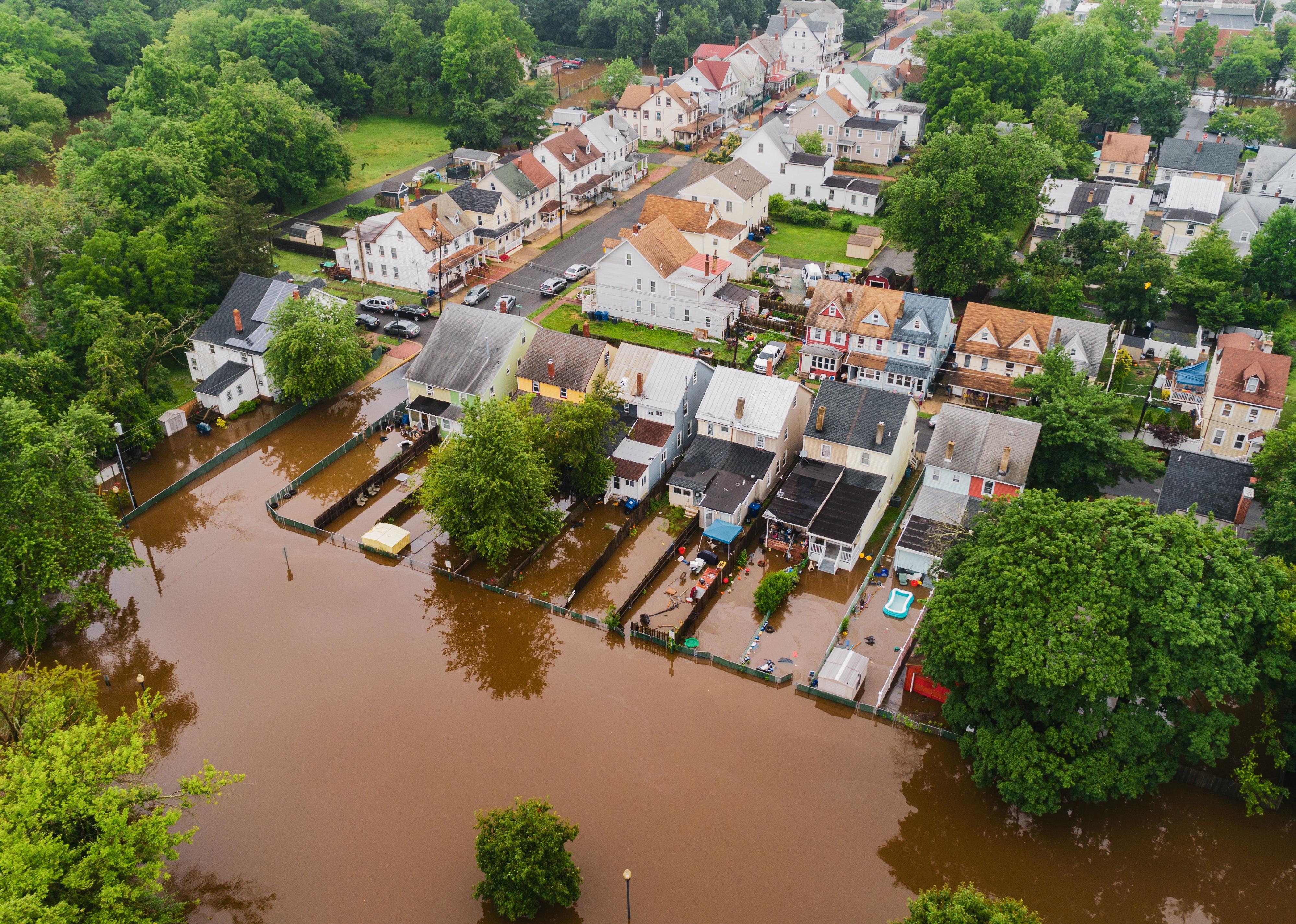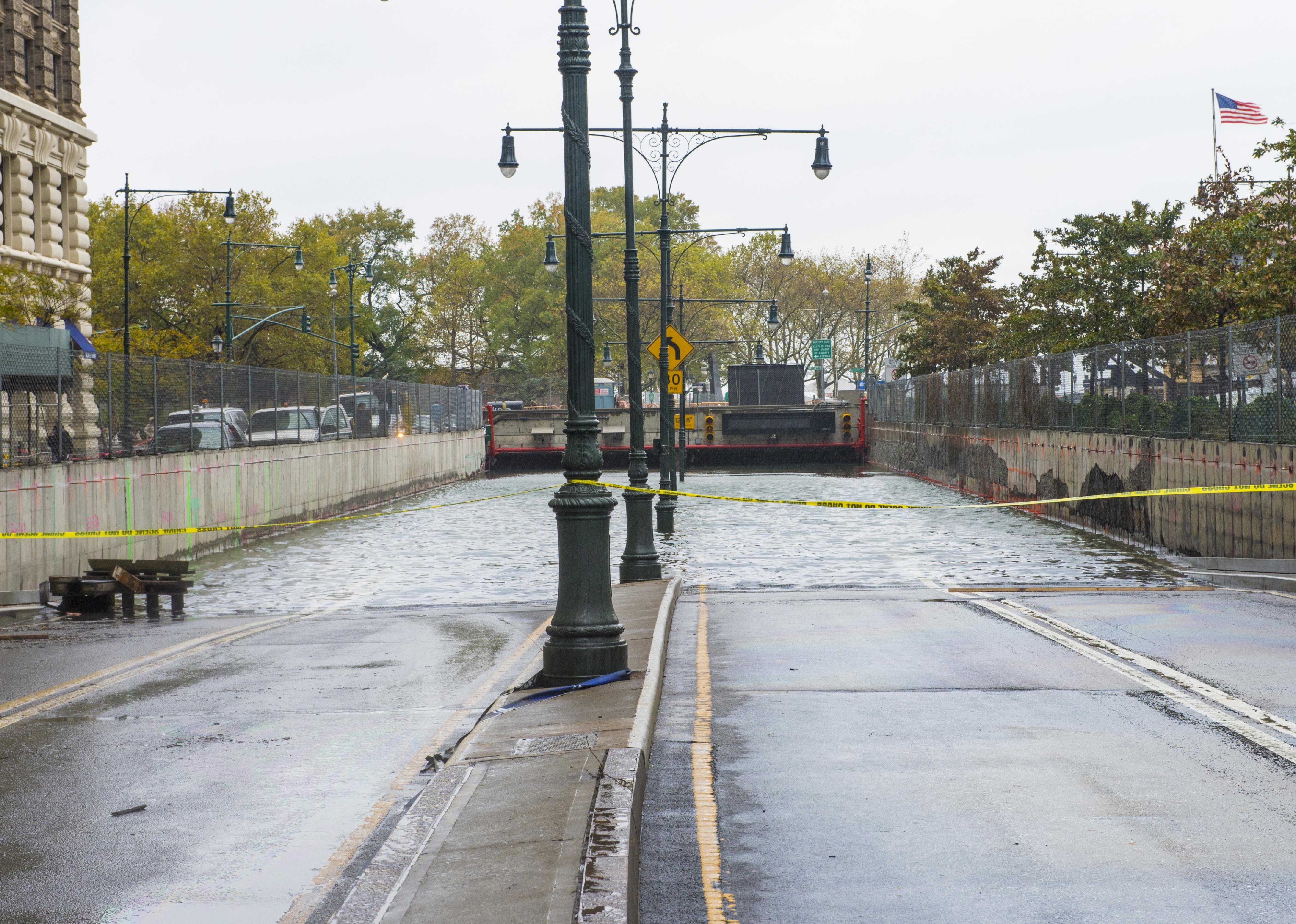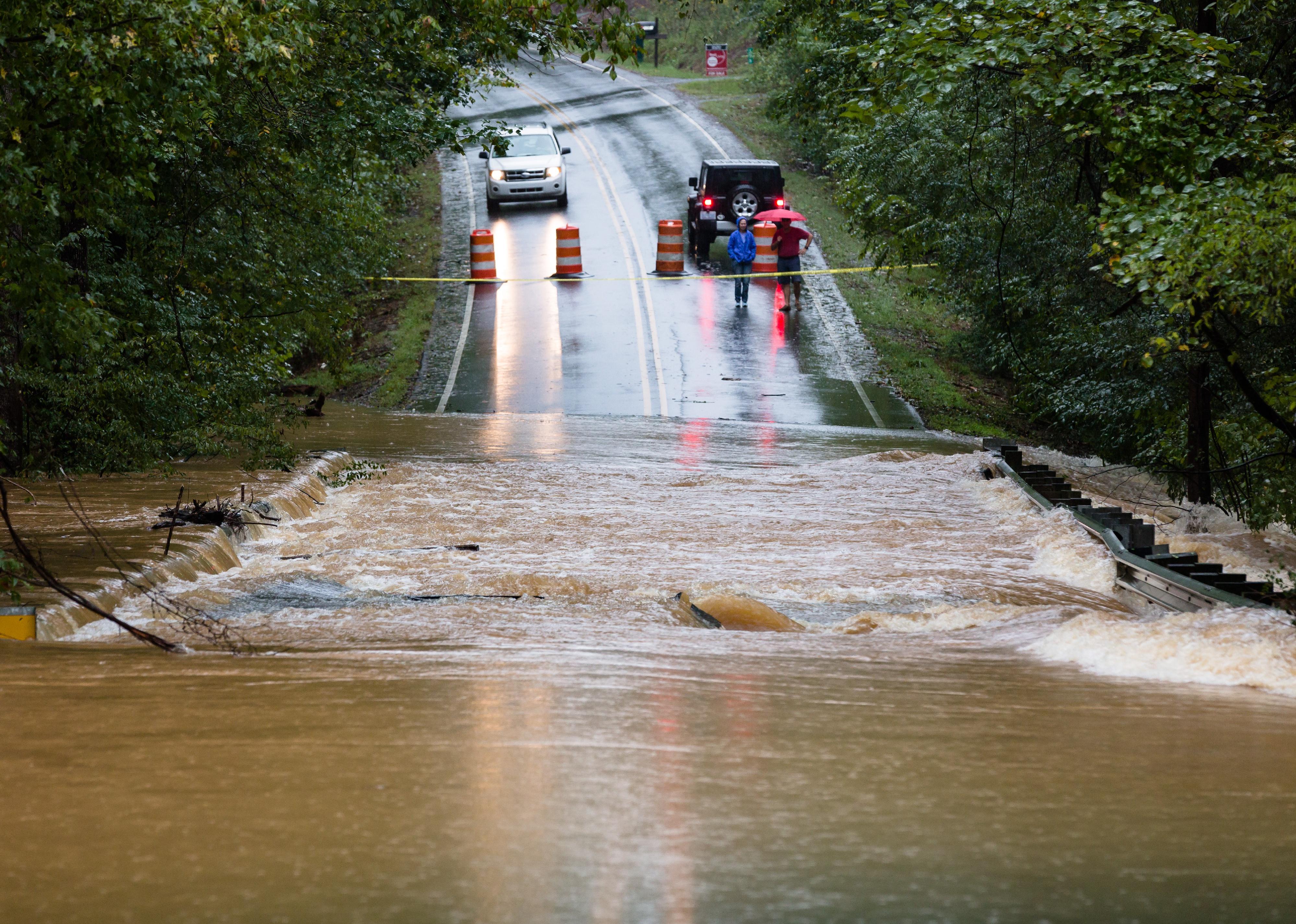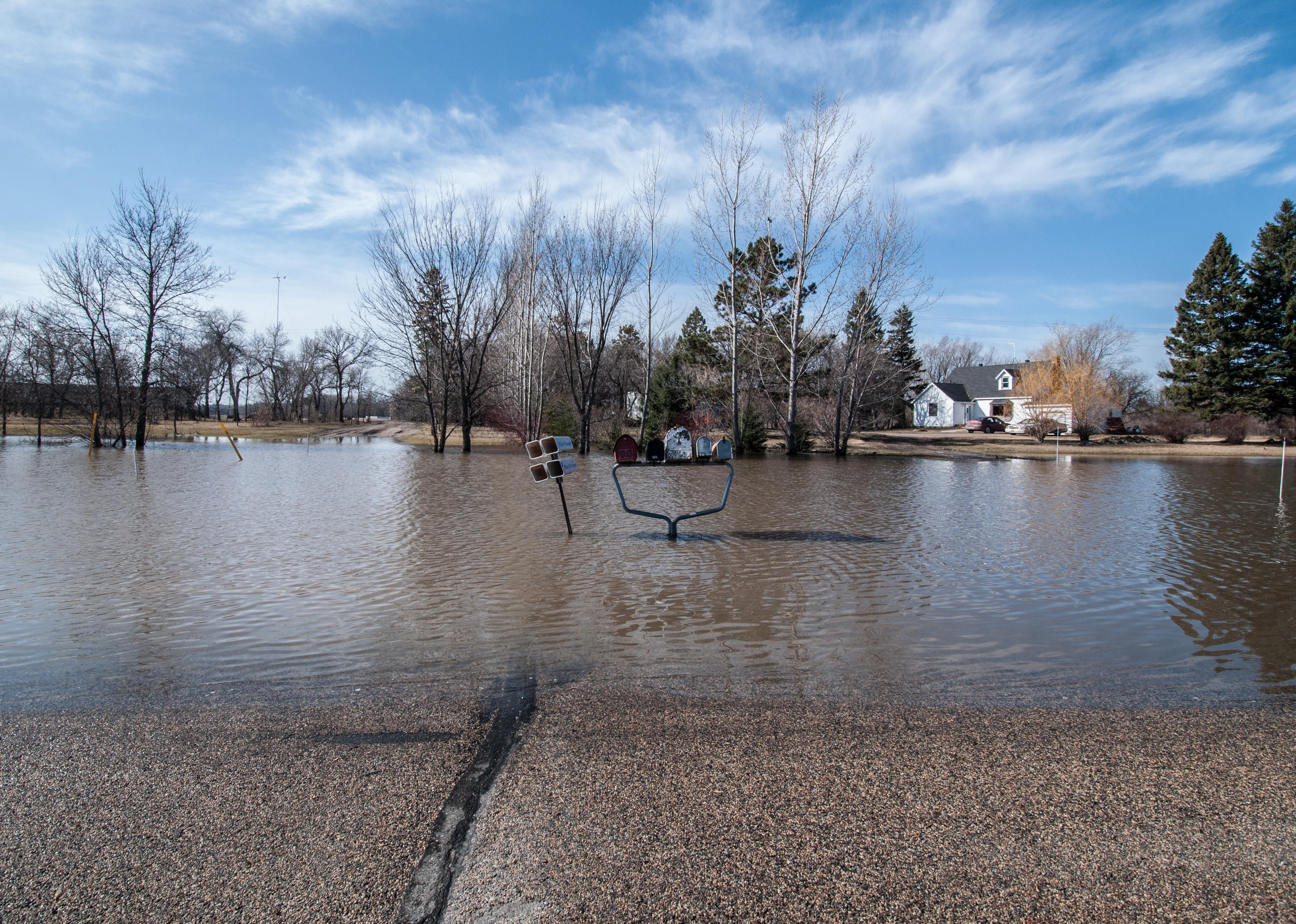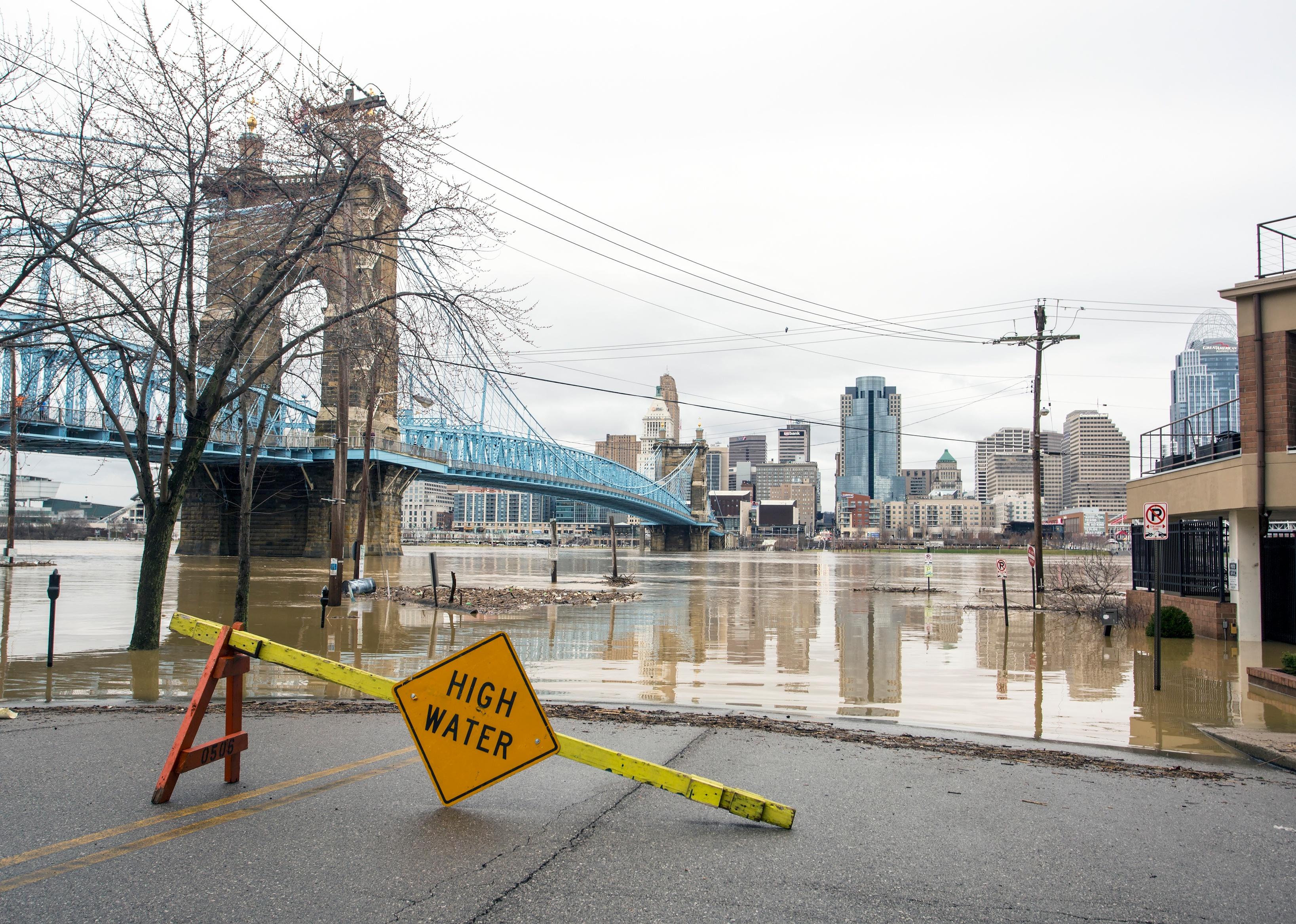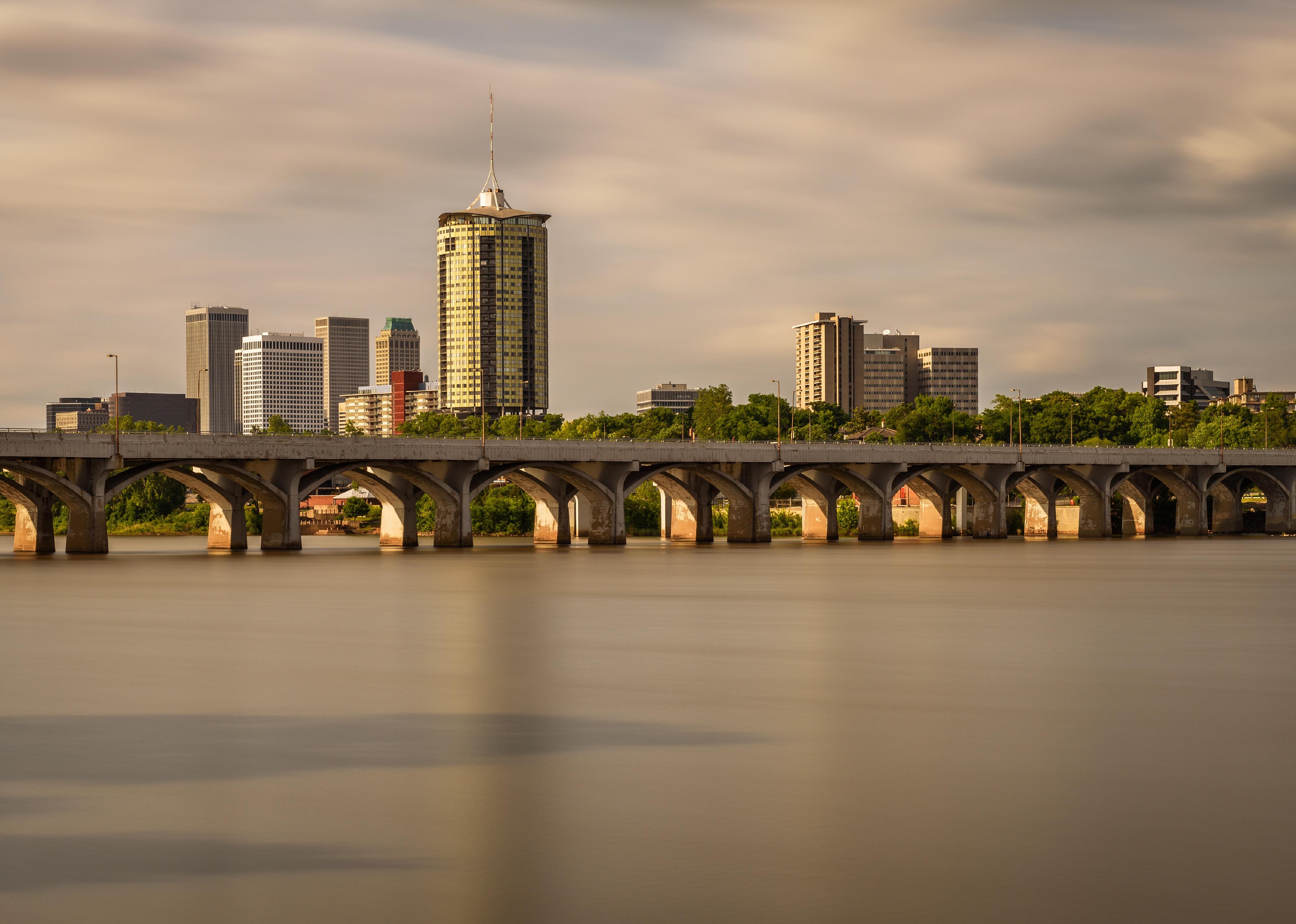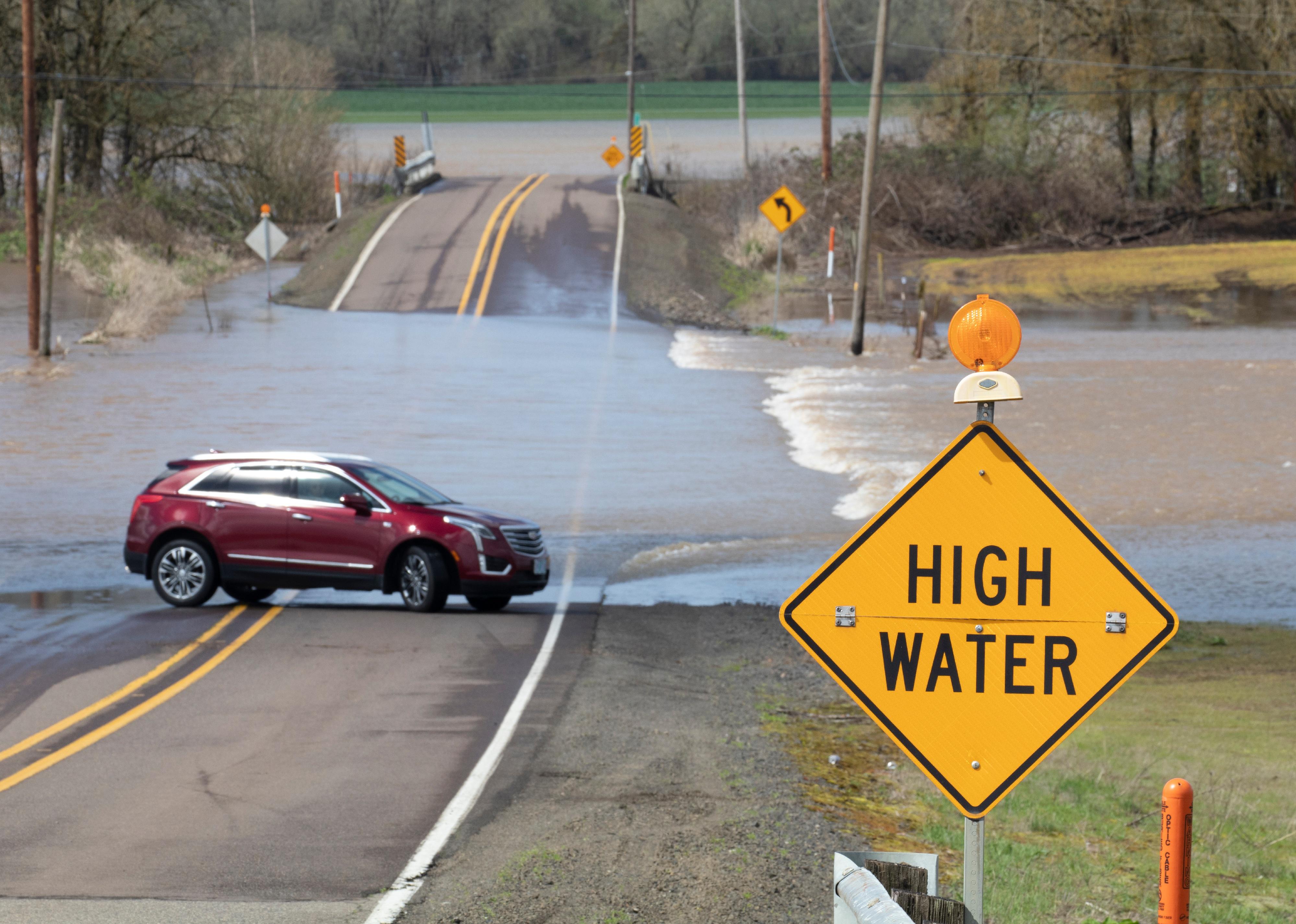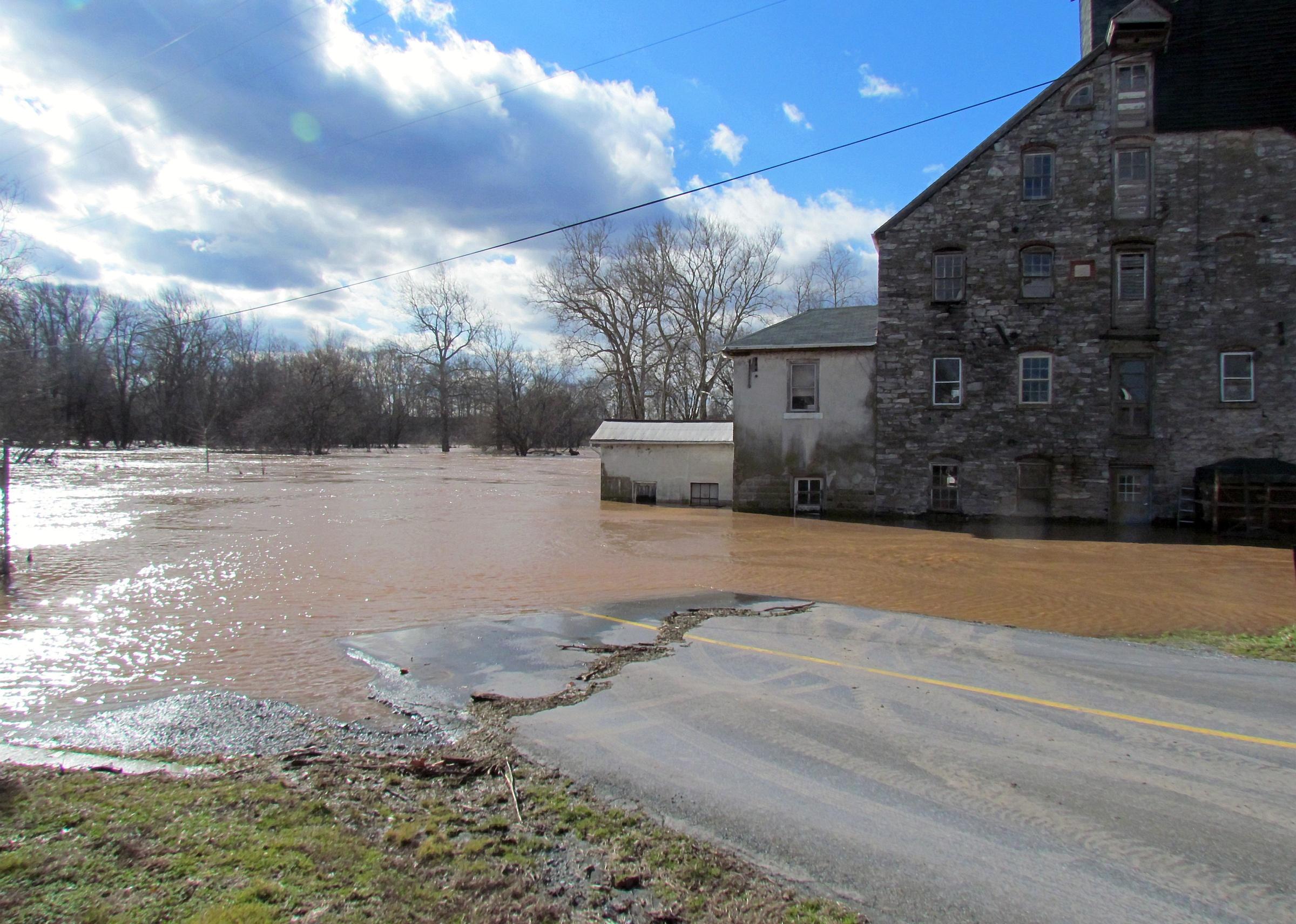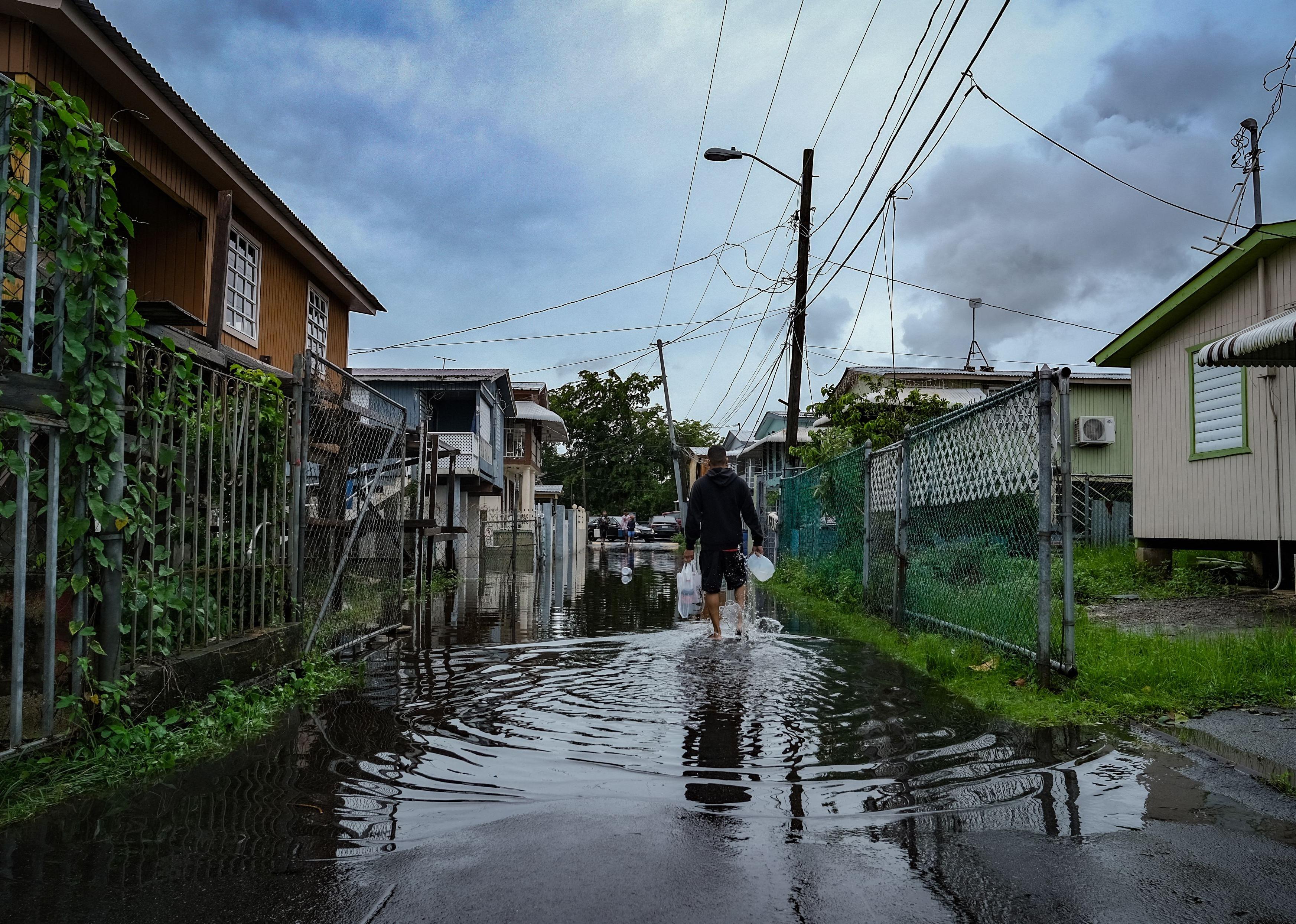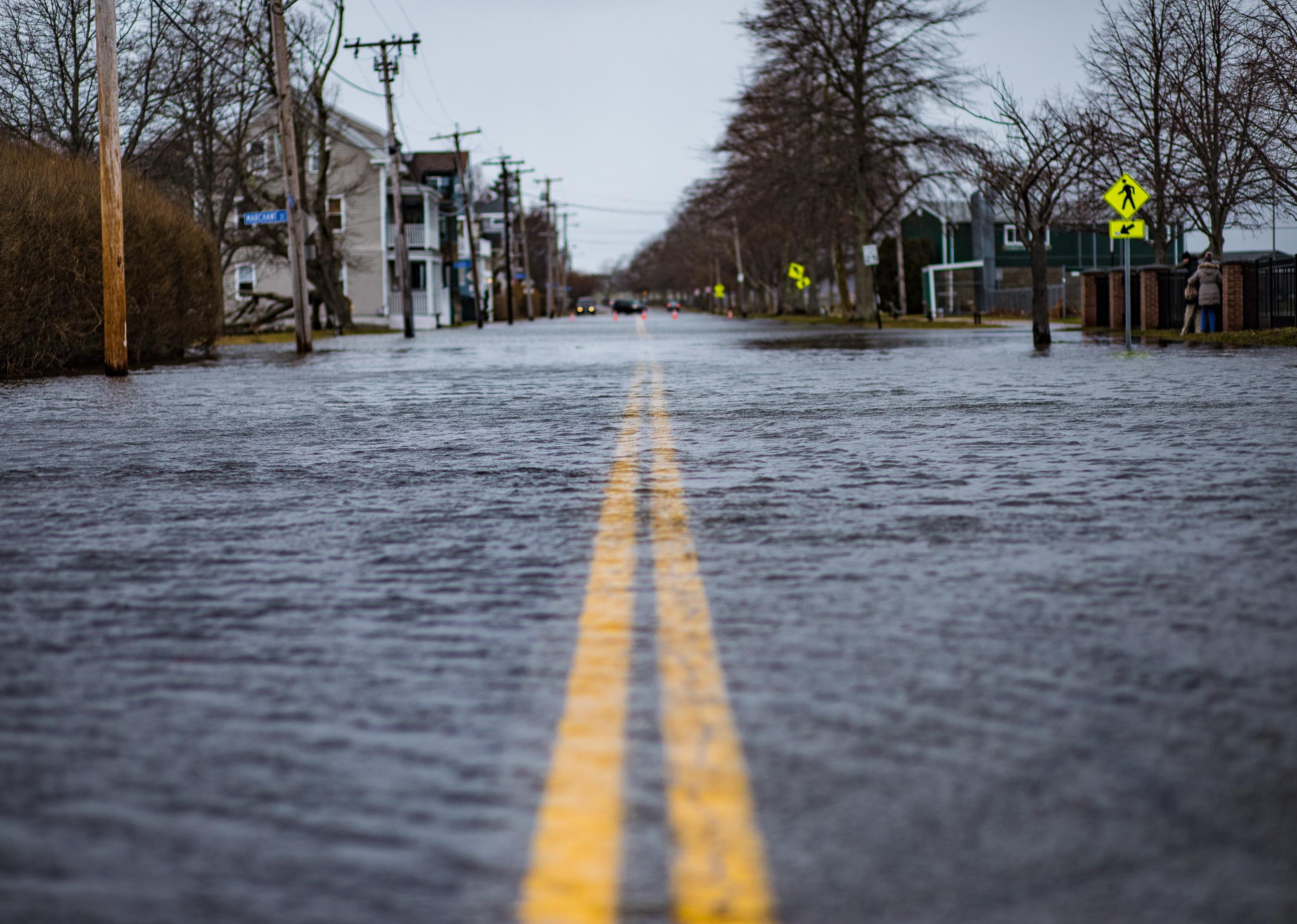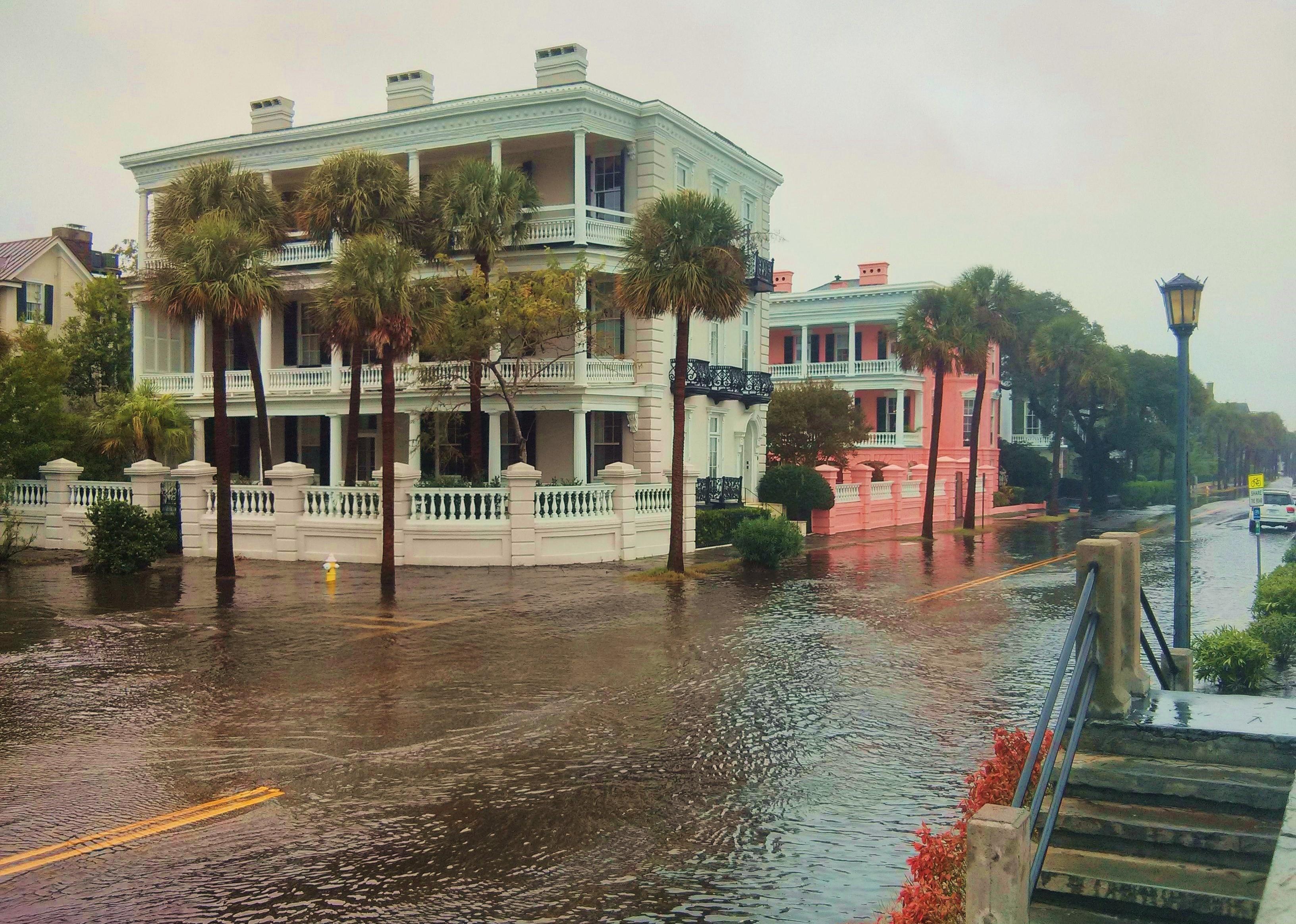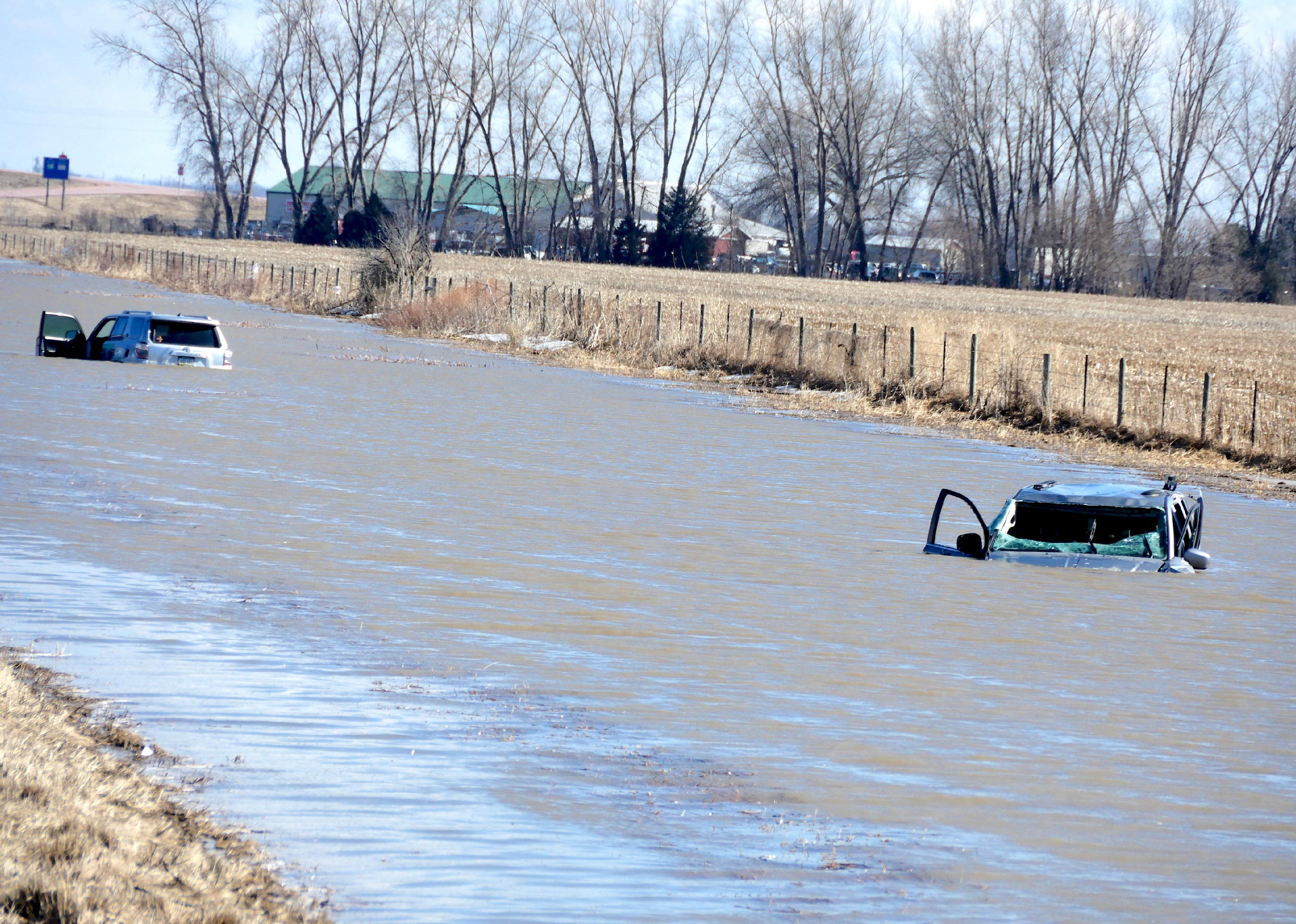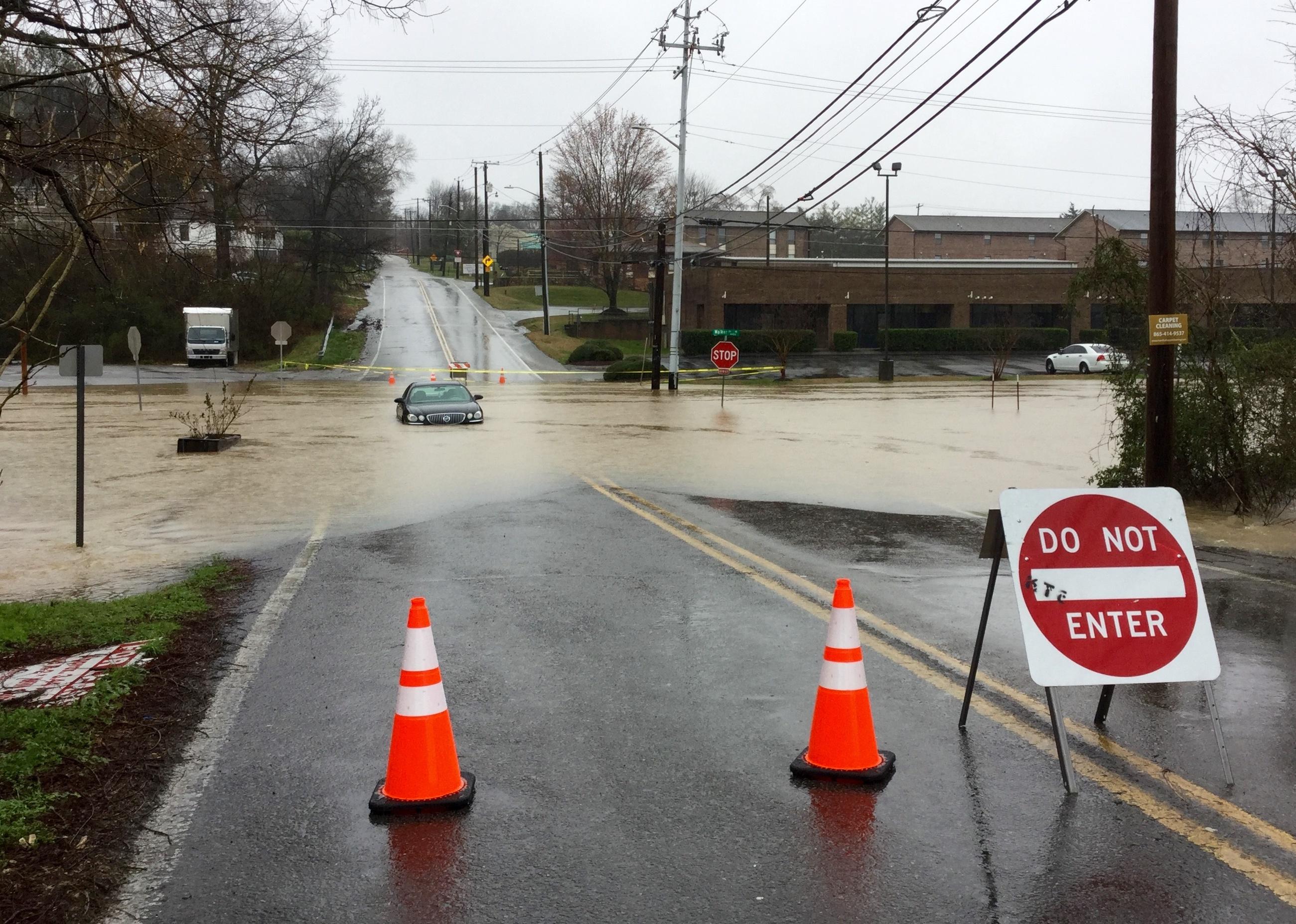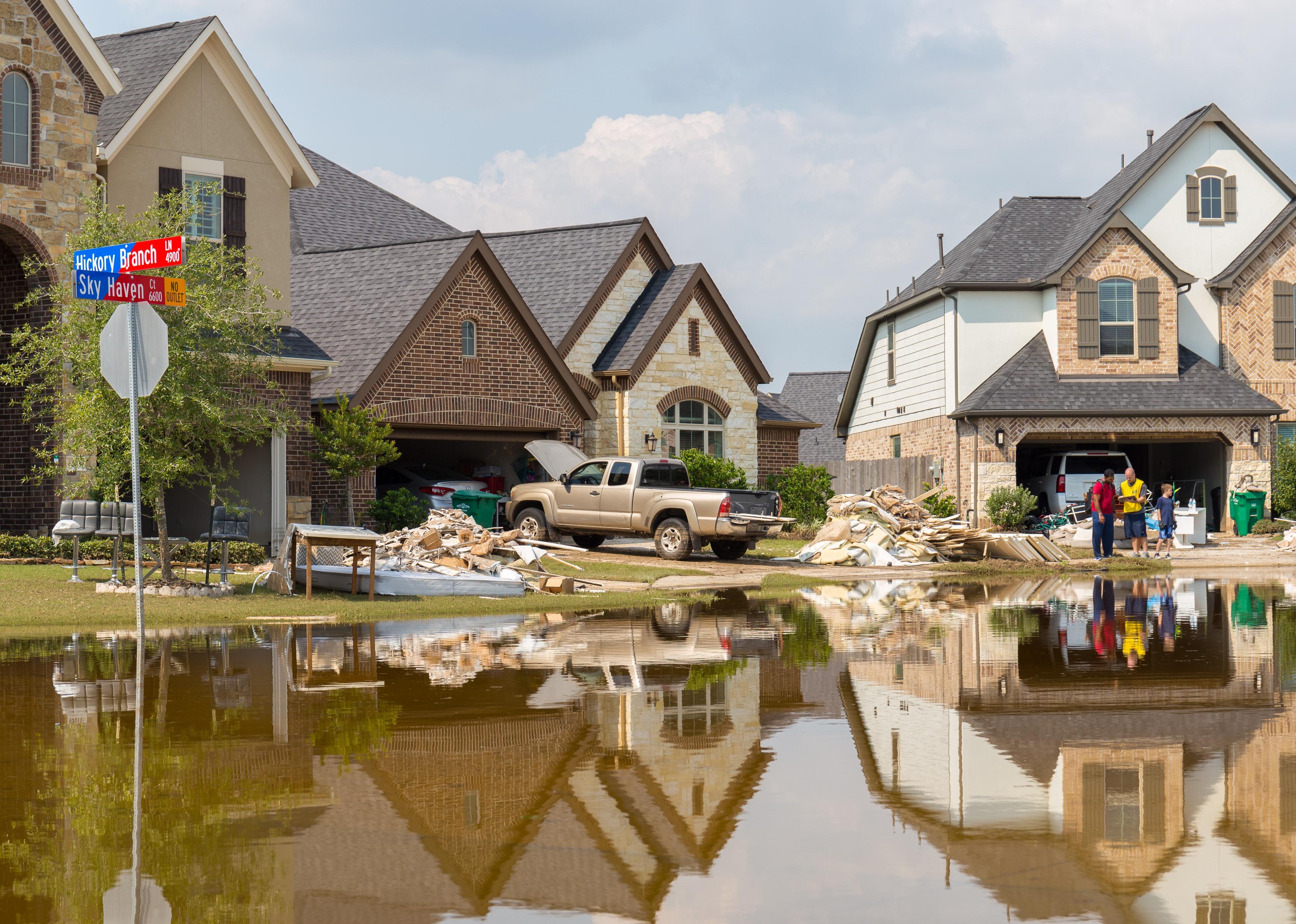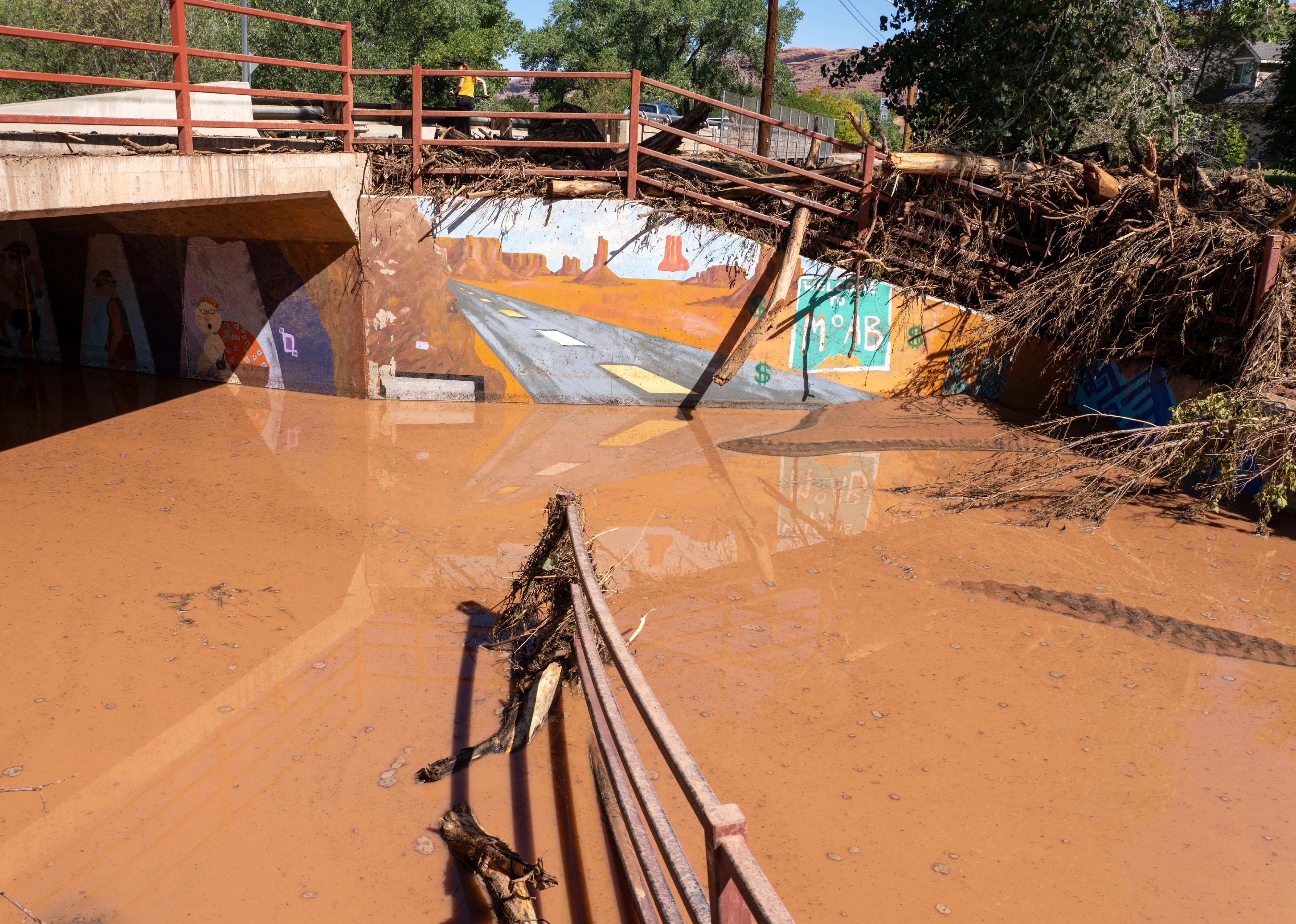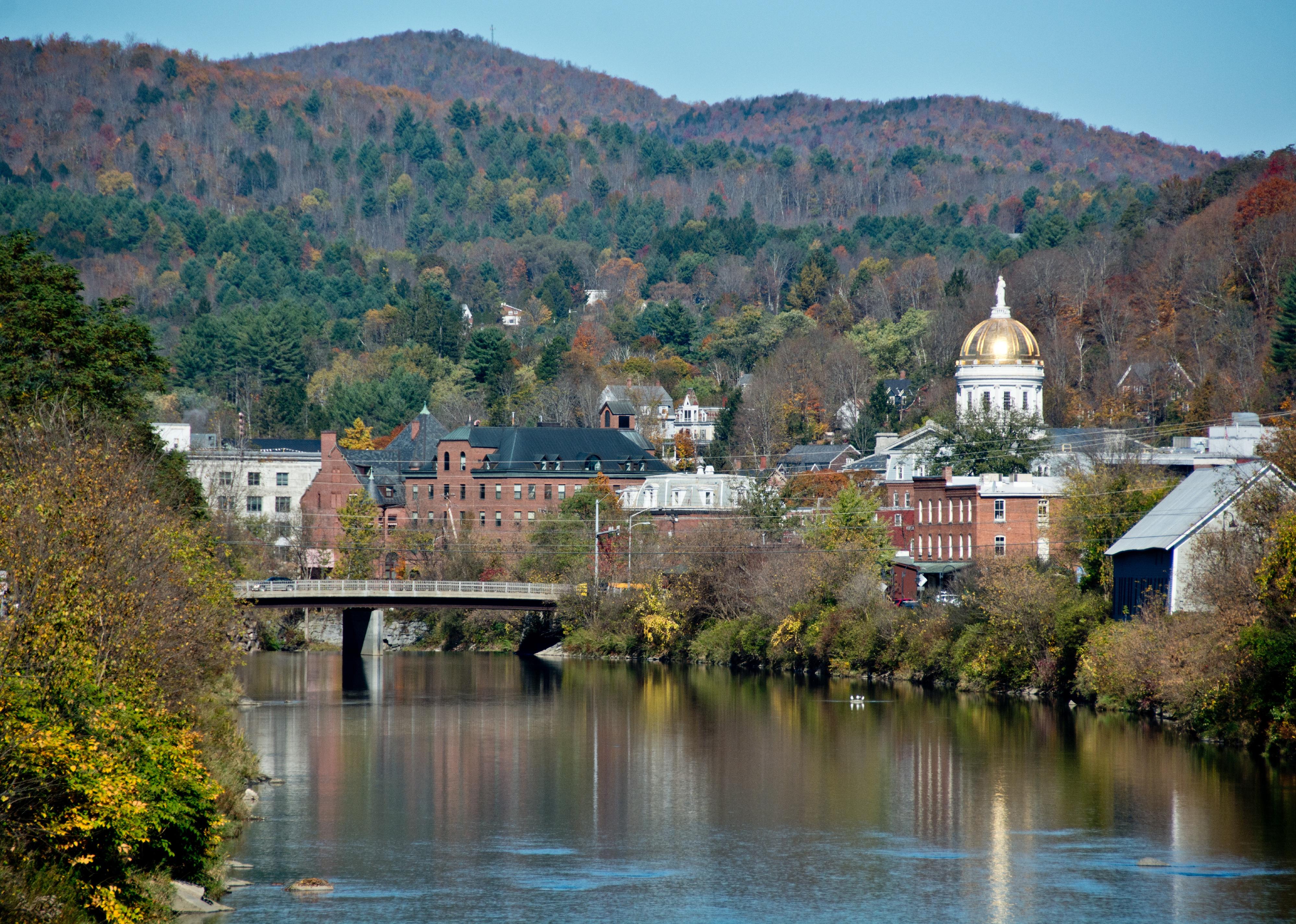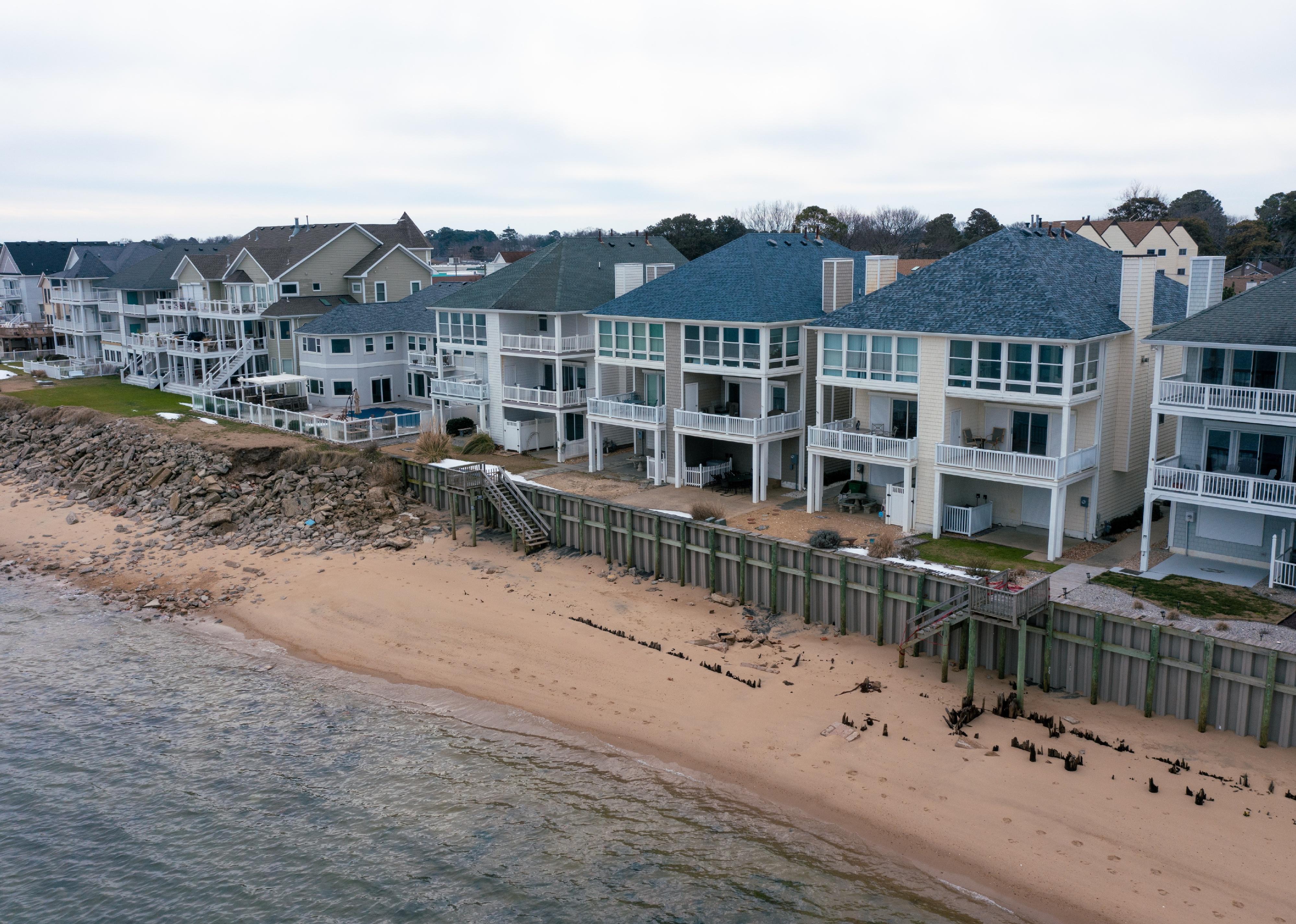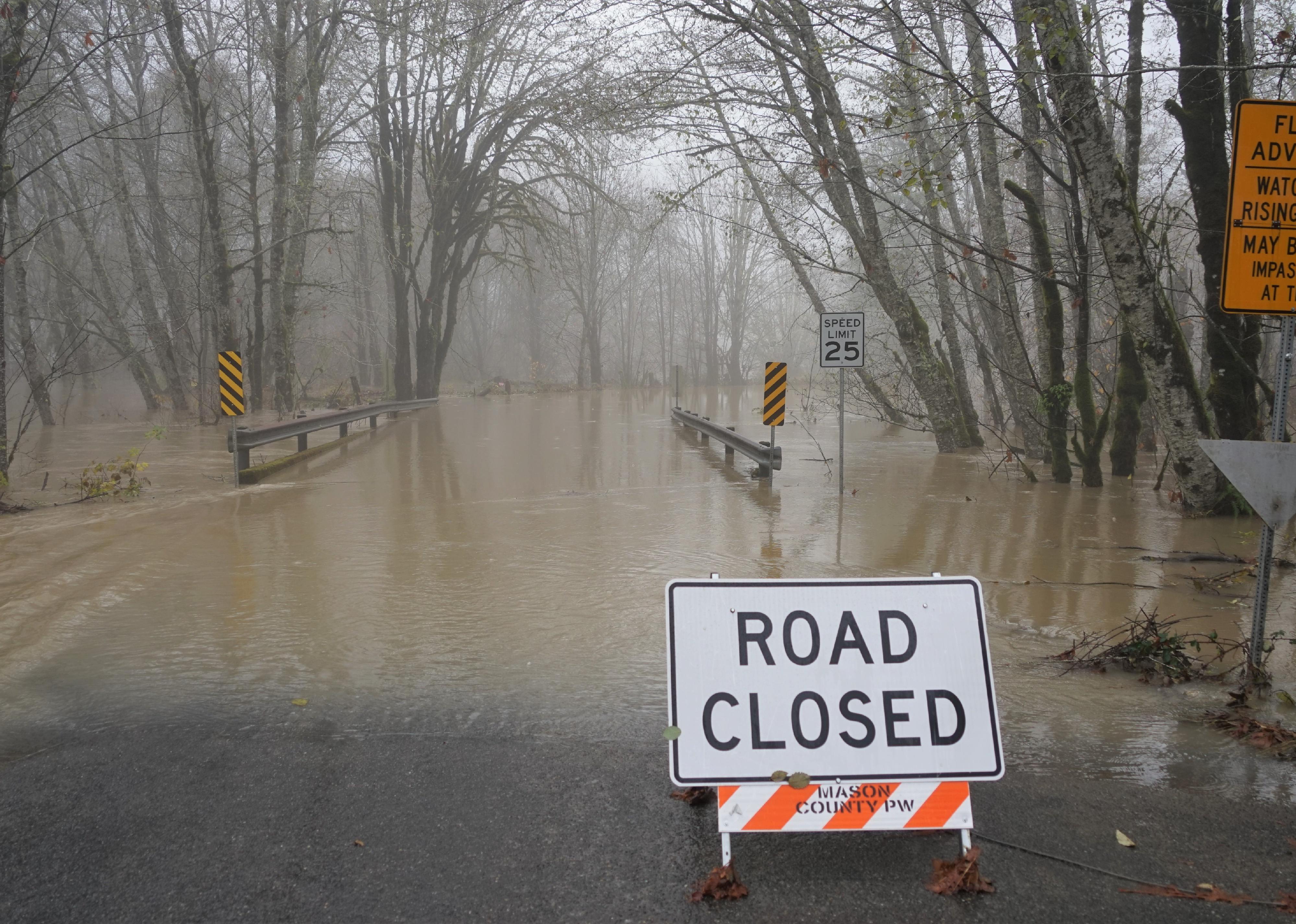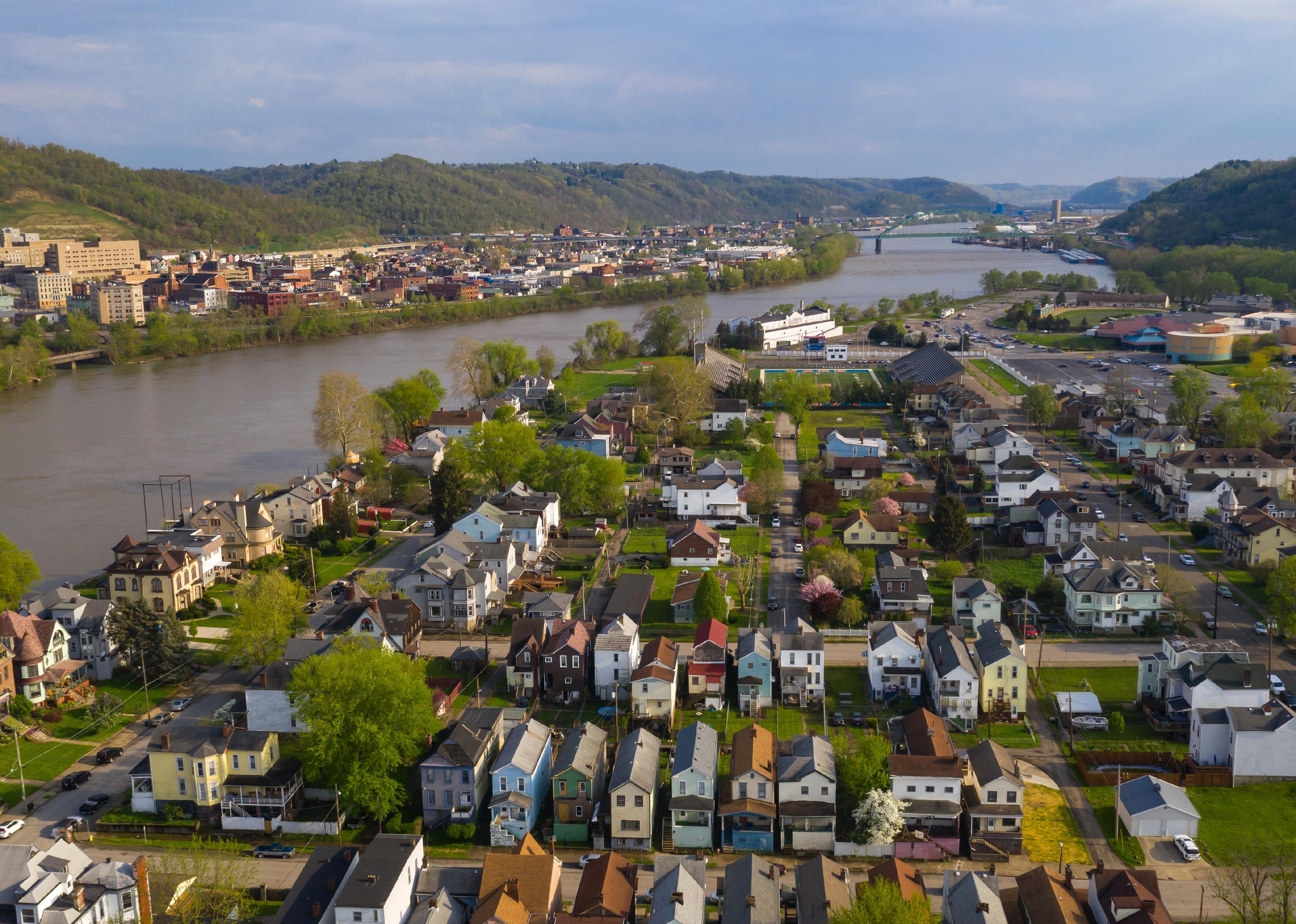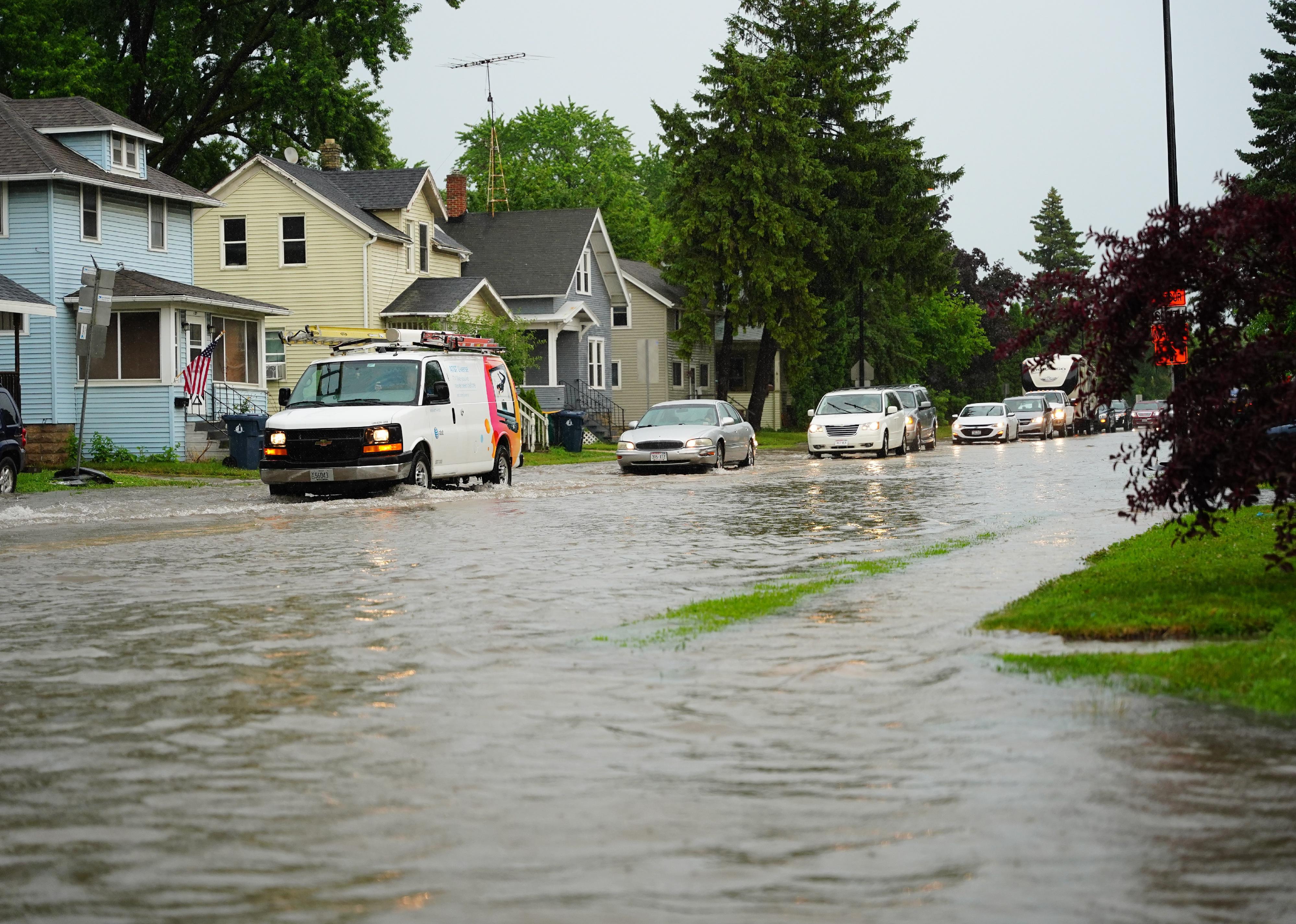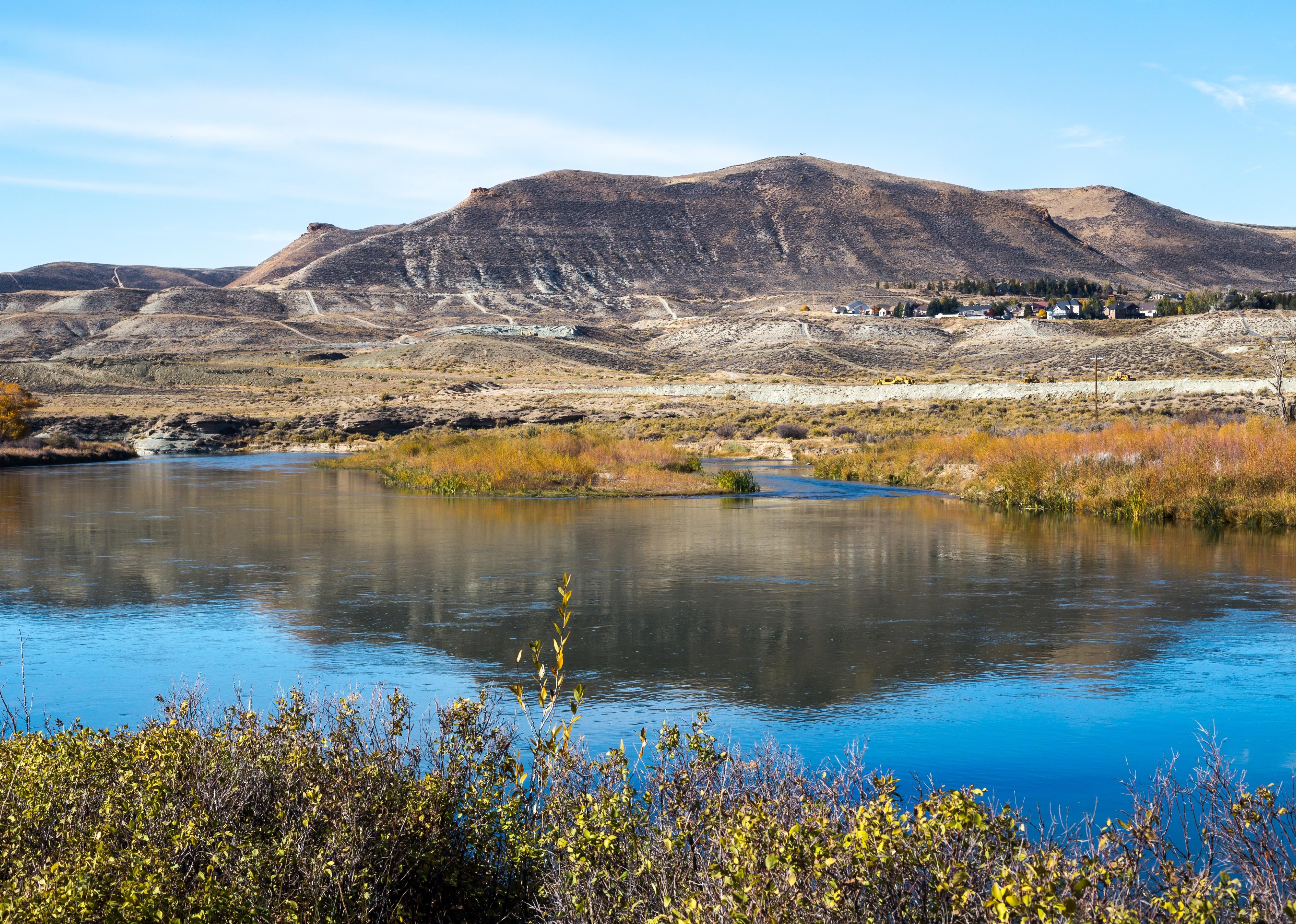How the flood risk has changed in your state, according to FEMA
Published 9:30 pm Monday, December 12, 2022
michelmond // Shutterstock
How the flood risk has changed in your state, according to FEMA
In order to update information about property flood risk, the Federal Emergency Management Administration modified the methodology used in its National Flood Insurance Program evaluations for the first time in 50 years.
Changes in climatic and urban conditions required a rigorous review of the variables taken into account to accurately determine how vulnerable a property is to flood risk. The new costs of insurance policies generated by the national flood insurance system now depend on the results of the latest study, Risk Rating 2.0.
Potential threats have increased for 3.9 million properties out of the 5 million re-diagnosed. Consequently, the cost of insurance premiums was raised, much to the discontent of developers and property owners, especially those in waterfront cities.
The previous methodology tended to overlook the replacement value of any given property, which resulted in inequity for lower-value homes that lay within the same flood plain as higher-value homes. This inequity equated all properties on equal footing for flood risk, with no consideration of the actual value loss for each property, which forced the owners of lower-value homes to purchase insurance packages more costly than was necessary. The new approach now factors in the individual risk for each property or home, which in turn means more valuable—generally waterfront—properties will have their flood insurance premiums rise.
Despite the concern from many high-value homeowners, on a national scale, 86.4% of premiums went up just $10 or less. In 8.6% of cases, the fee increase was somewhere between $10 and $20, while in the remaining 5%, it surpassed the $20 margin. In contrast, the risk rate dropped for 1.2 million properties; as a result, so did the cost of premiums. The revised amount meant a discount of up to $100 for 70.5% of policyholders, while the remaining 29.5% were granted reductions of $50 or more.
Citing the latest data, Stacker dug into how flood insurance premiums will change across every state in the first year of Risk Rating 2.0’s implementation. As of April 2022, all policies must follow the new ratings methodology.
You may also like: U.S. cities with the dirtiest air
![]()
Jens Lambert // Shutterstock
Alabama
52,648 properties with reassessed flood risk
– 11,217 properties with decreased risk
— 28.9% of monthly flood insurance premiums decreasing $50 or more
— 71.1% decreasing between $0 and $50
– 41,431 properties with increased risk
— 88.7% of premiums increasing up to $10
— 7.2% increasing between $10 and $20
— 4.1% increasing over $20
Photos BrianScantlebury // Shutterstock
Alaska
2,250 properties with reassessed flood risk
– 1,932 properties with decreased risk
— 26.6% of monthly flood insurance premiums decreasing $50 or more
— 73.4% decreasing between $0 and $50
– 318 properties with increased risk
— 88.4% of premiums increasing up to $10
— 7.2% increasing between $10 and $20
— 4.4% increasing over $20
You Touch Pix of EuToch // Shutterstock
Arizona
29,261 properties with reassessed flood risk
– 7,312 properties with decreased risk
— 40.9% of monthly flood insurance premiums decreasing $50 or more
— 59.1% decreasing between $0 and $50
– 21,949 properties with increased risk
— 91.0% of premiums increasing up to $10
— 6.4% increasing between $10 and $20
— 2.6% increasing over $20
Sean Pavone // Shutterstock
Arkansas
14,397 properties with reassessed flood risk
– 4,771 properties with decreased risk
— 43.9% of monthly flood insurance premiums decreasing $50 or more
— 56.1% decreasing between $0 and $50
– 9,626 properties with increased risk
— 84.6% of premiums increasing up to $10
— 9.5% increasing between $10 and $20
— 5.9% increasing over $20
Michael Vi // Shutterstock
California
214,829 properties with reassessed flood risk
– 57,541 properties with decreased risk
— 38.5% of monthly flood insurance premiums decreasing $50 or more
— 61.5% decreasing between $0 and $50
– 157,288 properties with increased risk
— 86.3% of premiums increasing up to $10
— 8.6% increasing between $10 and $20
— 5.1% increasing over $20
You may also like: U.S. cities with the cleanest air
marekuliasz // Shutterstock
Colorado
19,983 properties with reassessed flood risk
– 8,675 properties with decreased risk
— 30.6% of monthly flood insurance premiums decreasing $50 or more
— 69.4% decreasing between $0 and $50
– 11,308 properties with increased risk
— 84.5% of premiums increasing up to $10
— 8.4% increasing between $10 and $20
— 7.1% increasing over $20
Kyle Lee // Shutterstock
Connecticut
34,828 properties with reassessed flood risk
– 12,739 properties with decreased risk
— 49.5% of monthly flood insurance premiums decreasing $50 or more
— 50.5% decreasing between $0 and $50
– 22,089 properties with increased risk
— 73.7% of premiums increasing up to $10
— 11.9% increasing between $10 and $20
— 14.3% increasing over $20
Real Window Creative // Shutterstock
Delaware
26,147 properties with reassessed flood risk
– 9,845 properties with decreased risk
— 21.7% of monthly flood insurance premiums decreasing $50 or more
— 78.3% decreasing between $0 and $50
– 16,302 properties with increased risk
— 83.0% of premiums increasing up to $10
— 13.4% increasing between $10 and $20
— 3.5% increasing over $20
Bilanol // Shutterstock
Florida
1.7M properties with reassessed flood risk
– 342,109 properties with decreased risk
— 13.2% of monthly flood insurance premiums decreasing $50 or more
— 86.8% decreasing between $0 and $50
– 1.4M properties with increased risk
— 85.0% of premiums increasing up to $10
— 9.7% increasing between $10 and $20
— 5.3% increasing over $20
Gus Valente // Shutterstock
Georgia
81,998 properties with reassessed flood risk
– 19,929 properties with decreased risk
— 31.9% of monthly flood insurance premiums decreasing $50 or more
— 68.1% decreasing between $0 and $50
– 62,069 properties with increased risk
— 91.3% of premiums increasing up to $10
— 6.1% increasing between $10 and $20
— 2.5% increasing over $20
You may also like: 25 endangered animals that only live in America
Uheheu // Shutterstock
Hawaii
61,382 properties with reassessed flood risk
– 7,924 properties with decreased risk
— 38.9% of monthly flood insurance premiums decreasing $50 or more
— 61.1% decreasing between $0 and $50
– 53,458 properties with increased risk
— 90.0% of premiums increasing up to $10
— 5.3% increasing between $10 and $20
— 4.8% increasing over $20
Ric Schafer // Shutterstock
Idaho
5,645 properties with reassessed flood risk
– 1,580 properties with decreased risk
— 37.8% of monthly flood insurance premiums decreasing $50 or more
— 62.2% decreasing between $0 and $50
– 4,065 properties with increased risk
— 88.2% of premiums increasing up to $10
— 7.8% increasing between $10 and $20
— 4.0% increasing over $20
Jon Rehg // Shutterstock
Illinois
37,677 properties with reassessed flood risk
– 15,714 properties with decreased risk
— 43.9% of monthly flood insurance premiums decreasing $50 or more
— 56.1% decreasing between $0 and $50
– 21,963 properties with increased risk
— 84.0% of premiums increasing up to $10
— 9.3% increasing between $10 and $20
— 6.6% increasing over $20
Tony Campbell // Shutterstock
Indiana
20,081 properties with reassessed flood risk
– 9,162 properties with decreased risk
— 48.4% of monthly flood insurance premiums decreasing $50 or more
— 51.6% decreasing between $0 and $50
– 10,919 properties with increased risk
— 86.9% of premiums increasing up to $10
— 8.2% increasing between $10 and $20
— 4.9% increasing over $20
Michael Rolands // Shutterstock
Iowa
12,637 properties with reassessed flood risk
– 4,670 properties with decreased risk
— 44.3% of monthly flood insurance premiums decreasing $50 or more
— 55.7% decreasing between $0 and $50
– 7,967 properties with increased risk
— 82.0% of premiums increasing up to $10
— 7.8% increasing between $10 and $20
— 10.2% increasing over $20
You may also like: Major cities with the biggest projected water shortages by 2040
KSwinicki // Shutterstock
Kansas
9,565 properties with reassessed flood risk
– 3,630 properties with decreased risk
— 42.3% of monthly flood insurance premiums decreasing $50 or more
— 57.7% decreasing between $0 and $50
– 5,935 properties with increased risk
— 90.2% of premiums increasing up to $10
— 5.0% increasing between $10 and $20
— 4.8% increasing over $20
Brymer // Shutterstock
Kentucky
19,361 properties with reassessed flood risk
– 5,523 properties with decreased risk
— 42.0% of monthly flood insurance premiums decreasing $50 or more
— 58.0% decreasing between $0 and $50
– 13,838 properties with increased risk
— 76.3% of premiums increasing up to $10
— 14.7% increasing between $10 and $20
— 9.0% increasing over $20
ccpixx photography // Shutterstock
Louisiana
495,923 properties with reassessed flood risk
– 101,171 properties with decreased risk
— 36.9% of monthly flood insurance premiums decreasing $50 or more
— 63.1% decreasing between $0 and $50
– 394,752 properties with increased risk
— 87.0% of premiums increasing up to $10
— 8.7% increasing between $10 and $20
— 4.3% increasing over $20
Arthur Villator // Shutterstock
Maine
7,746 properties with reassessed flood risk
– 2,605 properties with decreased risk
— 35.9% of monthly flood insurance premiums decreasing $50 or more
— 64.1% decreasing between $0 and $50
– 5,141 properties with increased risk
— 76.8% of premiums increasing up to $10
— 9.9% increasing between $10 and $20
— 13.3% increasing over $20
Jeramey Lende // Shutterstock
Maryland
64,942 properties with reassessed flood risk
– 39,903 properties with decreased risk
— 14.3% of monthly flood insurance premiums decreasing $50 or more
— 85.7% decreasing between $0 and $50
– 25,039 properties with increased risk
— 92.1% of premiums increasing up to $10
— 5.4% increasing between $10 and $20
— 2.4% increasing over $20
You may also like: Beginner’s guide to composting
Keith J Finks // Shutterstock
Massachusetts
58,501 properties with reassessed flood risk
– 22,594 properties with decreased risk
— 45.0% of monthly flood insurance premiums decreasing $50 or more
— 55.0% decreasing between $0 and $50
– 35,907 properties with increased risk
— 80.2% of premiums increasing up to $10
— 9.5% increasing between $10 and $20
— 10.3% increasing over $20
Pbd1950 // Shutterstock
Michigan
20,481 properties with reassessed flood risk
– 11,120 properties with decreased risk
— 43.7% of monthly flood insurance premiums decreasing $50 or more
— 56.3% decreasing between $0 and $50
– 9,361 properties with increased risk
— 90.2% of premiums increasing up to $10
— 6.7% increasing between $10 and $20
— 3.1% increasing over $20
Jacob Boomsma // Shutterstock
Minnesota
10,541 properties with reassessed flood risk
– 3,093 properties with decreased risk
— 38.4% of monthly flood insurance premiums decreasing $50 or more
— 61.6% decreasing between $0 and $50
– 7,448 properties with increased risk
— 90.8% of premiums increasing up to $10
— 5.3% increasing between $10 and $20
— 3.9% increasing over $20
Chad Robertson Media // Shutterstock
Mississippi
61,317 properties with reassessed flood risk
– 10,047 properties with decreased risk
— 40.6% of monthly flood insurance premiums decreasing $50 or more
— 59.4% decreasing between $0 and $50
– 51,270 properties with increased risk
— 87.1% of premiums increasing up to $10
— 7.6% increasing between $10 and $20
— 5.3% increasing over $20
Gino Santa Maria // Shutterstock
Missouri
19,706 properties with reassessed flood risk
– 5,839 properties with decreased risk
— 45.8% of monthly flood insurance premiums decreasing $50 or more
— 54.2% decreasing between $0 and $50
– 13,867 properties with increased risk
— 77.3% of premiums increasing up to $10
— 12.3% increasing between $10 and $20
— 10.4% increasing over $20
You may also like: Animal species that may become extinct in our lifetime
Jacob Boomsma // Shutterstock
Montana
4,339 properties with reassessed flood risk
– 1,617 properties with decreased risk
— 38.8% of monthly flood insurance premiums decreasing $50 or more
— 61.2% decreasing between $0 and $50
– 2,722 properties with increased risk
— 92.3% of premiums increasing up to $10
— 4.8% increasing between $10 and $20
— 2.9% increasing over $20
robert2001 // Shutterstock
Nebraska
9,129 properties with reassessed flood risk
– 3,964 properties with decreased risk
— 50.1% of monthly flood insurance premiums decreasing $50 or more
— 49.9% decreasing between $0 and $50
– 5,165 properties with increased risk
— 80.2% of premiums increasing up to $10
— 8.1% increasing between $10 and $20
— 11.7% increasing over $20
Jeffrey J Coleman // Shutterstock
Nevada
10,586 properties with reassessed flood risk
– 2,196 properties with decreased risk
— 49.5% of monthly flood insurance premiums decreasing $50 or more
— 50.5% decreasing between $0 and $50
– 8,390 properties with increased risk
— 93.1% of premiums increasing up to $10
— 3.6% increasing between $10 and $20
— 3.3% increasing over $20
Sean Pavone // Shutterstock
New Hampshire
7,747 properties with reassessed flood risk
– 2,675 properties with decreased risk
— 36.6% of monthly flood insurance premiums decreasing $50 or more
— 63.4% decreasing between $0 and $50
– 5,072 properties with increased risk
— 76.4% of premiums increasing up to $10
— 13.4% increasing between $10 and $20
— 10.1% increasing over $20
Tippman98x // Shutterstock
New Jersey
217,178 properties with reassessed flood risk
– 46,318 properties with decreased risk
— 43.0% of monthly flood insurance premiums decreasing $50 or more
— 57.0% decreasing between $0 and $50
– 170,860 properties with increased risk
— 80.3% of premiums increasing up to $10
— 13.1% increasing between $10 and $20
— 6.6% increasing over $20
You may also like: Major cities with the biggest projected water shortages by 2040
gmeland // Shutterstock
New Mexico
11,556 properties with reassessed flood risk
– 4,116 properties with decreased risk
— 43.6% of monthly flood insurance premiums decreasing $50 or more
— 56.4% decreasing between $0 and $50
– 7,440 properties with increased risk
— 86.1% of premiums increasing up to $10
— 10.5% increasing between $10 and $20
— 3.4% increasing over $20
Kobby Dagan // Shutterstock
New York
171,099 properties with reassessed flood risk
– 54,008 properties with decreased risk
— 44.3% of monthly flood insurance premiums decreasing $50 or more
— 55.7% decreasing between $0 and $50
– 117,091 properties with increased risk
— 80.1% of premiums increasing up to $10
— 10.3% increasing between $10 and $20
— 9.6% increasing over $20
Jeremy Warner // Shutterstock
North Carolina
139,842 properties with reassessed flood risk
– 35,701 properties with decreased risk
— 33.2% of monthly flood insurance premiums decreasing $50 or more
— 66.8% decreasing between $0 and $50
– 104,141 properties with increased risk
— 88.1% of premiums increasing up to $10
— 8.1% increasing between $10 and $20
— 3.7% increasing over $20
John Huntington // Shutterstock
North Dakota
13,161 properties with reassessed flood risk
– 5,020 properties with decreased risk
— 20.1% of monthly flood insurance premiums decreasing $50 or more
— 79.9% decreasing between $0 and $50
– 8,141 properties with increased risk
— 96.1% of premiums increasing up to $10
— 2.4% increasing between $10 and $20
— 1.5% increasing over $20
Bryan Busovicki // Shutterstock
Ohio
29,044 properties with reassessed flood risk
– 13,074 properties with decreased risk
— 44.2% of monthly flood insurance premiums decreasing $50 or more
— 55.8% decreasing between $0 and $50
– 15,970 properties with increased risk
— 83.0% of premiums increasing up to $10
— 10.7% increasing between $10 and $20
— 6.4% increasing over $20
You may also like: How long it takes 50 common items to decompose
Nick Fox // Shutterstock
Oklahoma
13,024 properties with reassessed flood risk
– 3,851 properties with decreased risk
— 46.0% of monthly flood insurance premiums decreasing $50 or more
— 54.0% decreasing between $0 and $50
– 9,173 properties with increased risk
— 86.3% of premiums increasing up to $10
— 7.9% increasing between $10 and $20
— 5.8% increasing over $20
Catherine Avilez // Shutterstock
Oregon
24,850 properties with reassessed flood risk
– 7,511 properties with decreased risk
— 39.5% of monthly flood insurance premiums decreasing $50 or more
— 60.5% decreasing between $0 and $50
– 17,339 properties with increased risk
— 83.1% of premiums increasing up to $10
— 11.2% increasing between $10 and $20
— 5.7% increasing over $20
Richard L. Bowman // Shutterstock
Pennsylvania
51,555 properties with reassessed flood risk
– 15,572 properties with decreased risk
— 47.6% of monthly flood insurance premiums decreasing $50 or more
— 52.4% decreasing between $0 and $50
– 35,983 properties with increased risk
— 79.6% of premiums increasing up to $10
— 10.7% increasing between $10 and $20
— 9.7% increasing over $20
AFP // Getty Images
Puerto Rico
7,987 properties with reassessed flood risk
– 3,268 properties with decreased risk
— 38.2% of monthly flood insurance premiums decreasing $50 or more
— 61.8% decreasing between $0 and $50
– 4,719 properties with increased risk
— 95.9% of premiums increasing up to $10
— 1.8% increasing between $10 and $20
— 2.3% increasing over $20
Olga Enger // Shutterstock
Rhode Island
12,001 properties with reassessed flood risk
– 5,520 properties with decreased risk
— 50.4% of monthly flood insurance premiums decreasing $50 or more
— 49.6% decreasing between $0 and $50
– 6,481 properties with increased risk
— 86.6% of premiums increasing up to $10
— 7.5% increasing between $10 and $20
— 5.9% increasing over $20
You may also like: Top 10 best and worst foods for the environment
David AvRutick // Shutterstock
South Carolina
208,559 properties with reassessed flood risk
– 53,213 properties with decreased risk
— 24.9% of monthly flood insurance premiums decreasing $50 or more
— 75.1% decreasing between $0 and $50
– 155,346 properties with increased risk
— 88.6% of premiums increasing up to $10
— 8.0% increasing between $10 and $20
— 3.4% increasing over $20
Kid Dog Travel // Shutterstock
South Dakota
3,743 properties with reassessed flood risk
– 1,148 properties with decreased risk
— 51.4% of monthly flood insurance premiums decreasing $50 or more
— 48.6% decreasing between $0 and $50
– 2,595 properties with increased risk
— 86.5% of premiums increasing up to $10
— 7.4% increasing between $10 and $20
— 6.1% increasing over $20
LuckyTenn7 // Shutterstock
Tennessee
27,507 properties with reassessed flood risk
– 7,581 properties with decreased risk
— 37.6% of monthly flood insurance premiums decreasing $50 or more
— 62.4% decreasing between $0 and $50
– 19,926 properties with increased risk
— 81.9% of premiums increasing up to $10
— 10.9% increasing between $10 and $20
— 7.2% increasing over $20
michelmond // Shutterstock
Texas
768,537 properties with reassessed flood risk
– 106,720 properties with decreased risk
— 36.5% of monthly flood insurance premiums decreasing $50 or more
— 63.5% decreasing between $0 and $50
– 661,817 properties with increased risk
— 91.8% of premiums increasing up to $10
— 4.9% increasing between $10 and $20
— 3.2% increasing over $20
VW Pics // Getty Images
Utah
3,755 properties with reassessed flood risk
– 2,006 properties with decreased risk
— 22.4% of monthly flood insurance premiums decreasing $50 or more
— 77.6% decreasing between $0 and $50
– 1,749 properties with increased risk
— 93.1% of premiums increasing up to $10
— 4.6% increasing between $10 and $20
— 2.3% increasing over $20
You may also like: States with the worst droughts
Erika J Mitchell // Shutterstock
Vermont
3,330 properties with reassessed flood risk
– 1,103 properties with decreased risk
— 55.6% of monthly flood insurance premiums decreasing $50 or more
— 44.4% decreasing between $0 and $50
– 2,227 properties with increased risk
— 74.9% of premiums increasing up to $10
— 13.8% increasing between $10 and $20
— 11.3% increasing over $20
Kyle J Little // Shutterstock
Virginia
104,781 properties with reassessed flood risk
– 46,811 properties with decreased risk
— 23.2% of monthly flood insurance premiums decreasing $50 or more
— 76.8% decreasing between $0 and $50
– 57,970 properties with increased risk
— 87.9% of premiums increasing up to $10
— 8.8% increasing between $10 and $20
— 3.3% increasing over $20
Terrence J Allison // Shutterstock
Washington
32,547 properties with reassessed flood risk
– 10,717 properties with decreased risk
— 42.3% of monthly flood insurance premiums decreasing $50 or more
— 57.7% decreasing between $0 and $50
– 21,830 properties with increased risk
— 81.9% of premiums increasing up to $10
— 11.8% increasing between $10 and $20
— 6.4% increasing over $20
Sean Pavone // Shutterstock
Washington D.C.
2,396 properties with reassessed flood risk
– 1,737 properties with decreased risk
— 10.6% of monthly flood insurance premiums decreasing $50 or more
— 89.4% decreasing between $0 and $50
– 659 properties with increased risk
— 88.3% of premiums increasing up to $10
— 6.4% increasing between $10 and $20
— 5.3% increasing over $20
Real Window Creative // Shutterstock
West Virginia
13,337 properties with reassessed flood risk
– 2,325 properties with decreased risk
— 49.5% of monthly flood insurance premiums decreasing $50 or more
— 50.5% decreasing between $0 and $50
– 11,012 properties with increased risk
— 72.2% of premiums increasing up to $10
— 17.6% increasing between $10 and $20
— 10.2% increasing over $20
You may also like: 25 of the most expensive science experiments in human history
Aaron of L.A. Photography // Shutterstock
Wisconsin
12,949 properties with reassessed flood risk
– 5,669 properties with decreased risk
— 44.9% of monthly flood insurance premiums decreasing $50 or more
— 55.1% decreasing between $0 and $50
– 7,280 properties with increased risk
— 90.5% of premiums increasing up to $10
— 6.2% increasing between $10 and $20
— 3.4% increasing over $20
Victoria Ditkovsky // Shutterstock
Wyoming
1,705 properties with reassessed flood risk
– 561 properties with decreased risk
— 49.2% of monthly flood insurance premiums decreasing $50 or more
— 50.8% decreasing between $0 and $50
– 1,144 properties with increased risk
— 88.9% of premiums increasing up to $10
— 6.6% increasing between $10 and $20
— 4.5% increasing over $20


